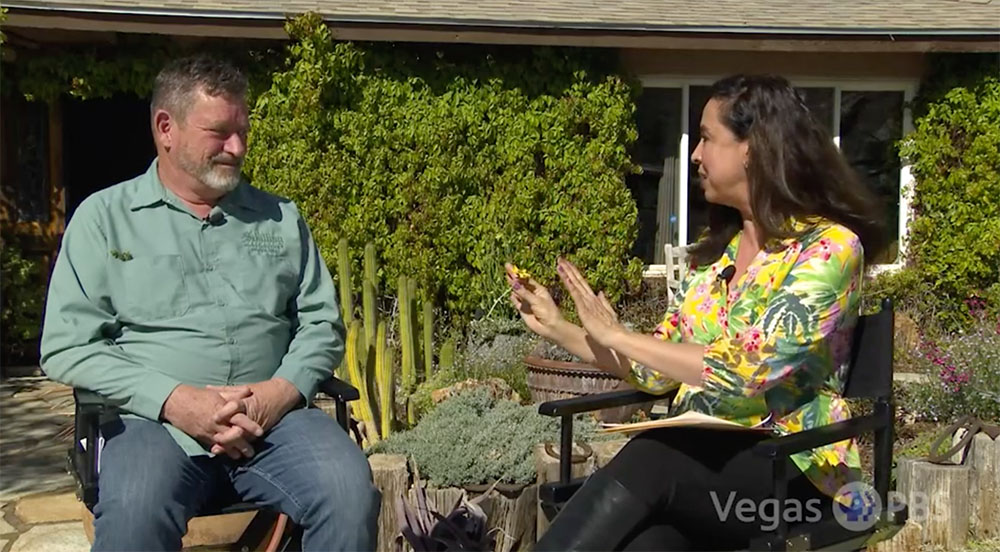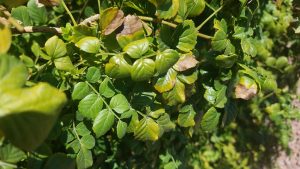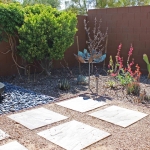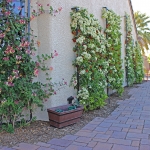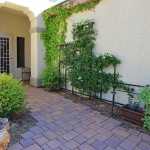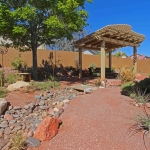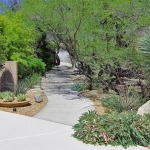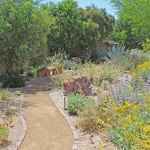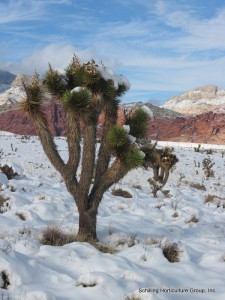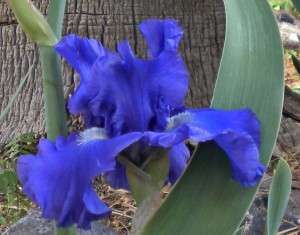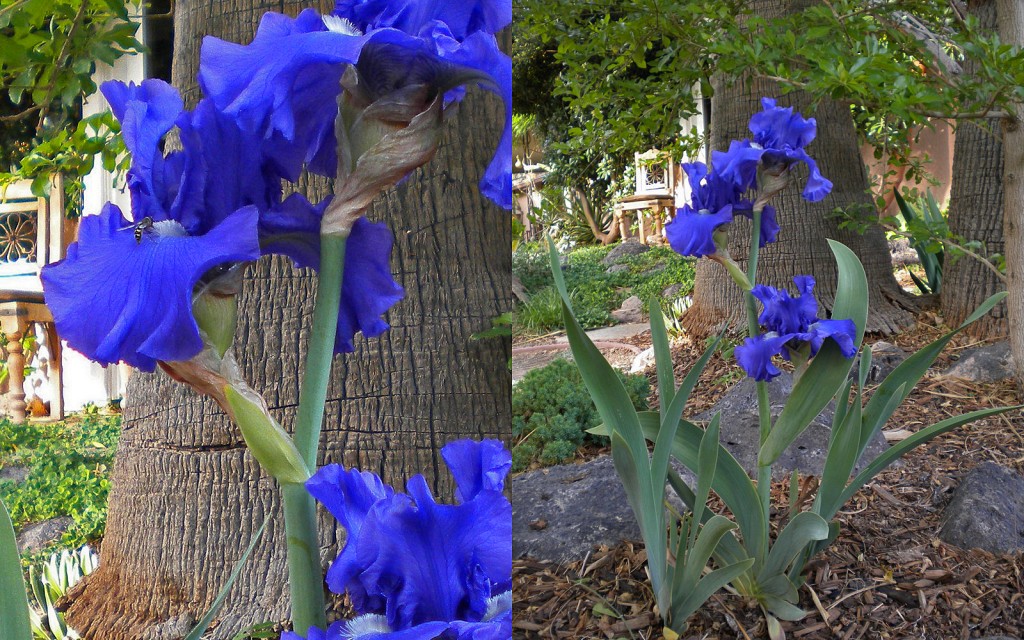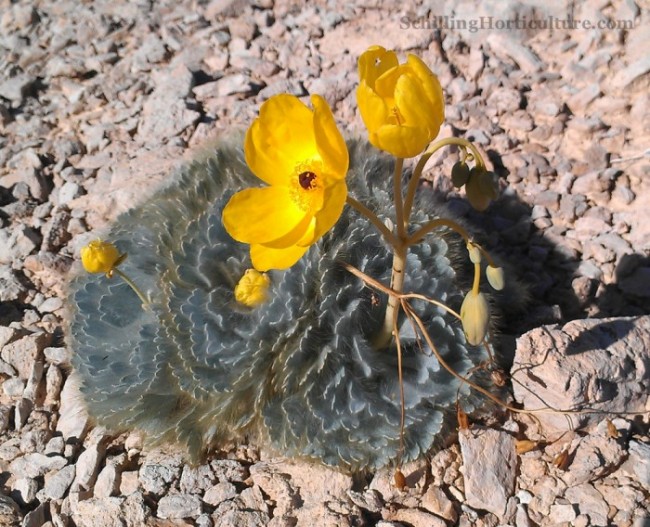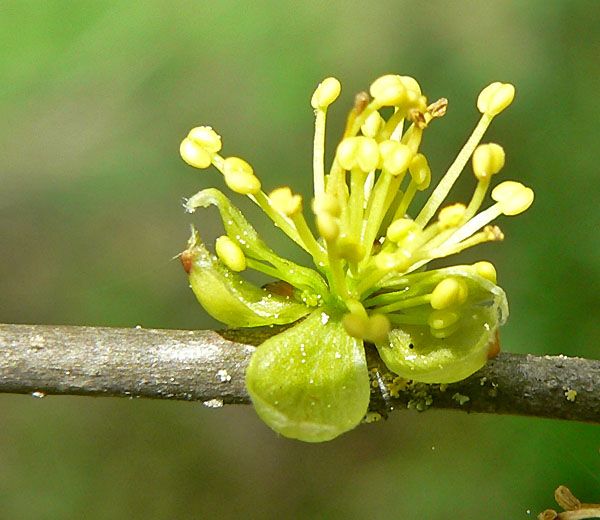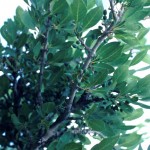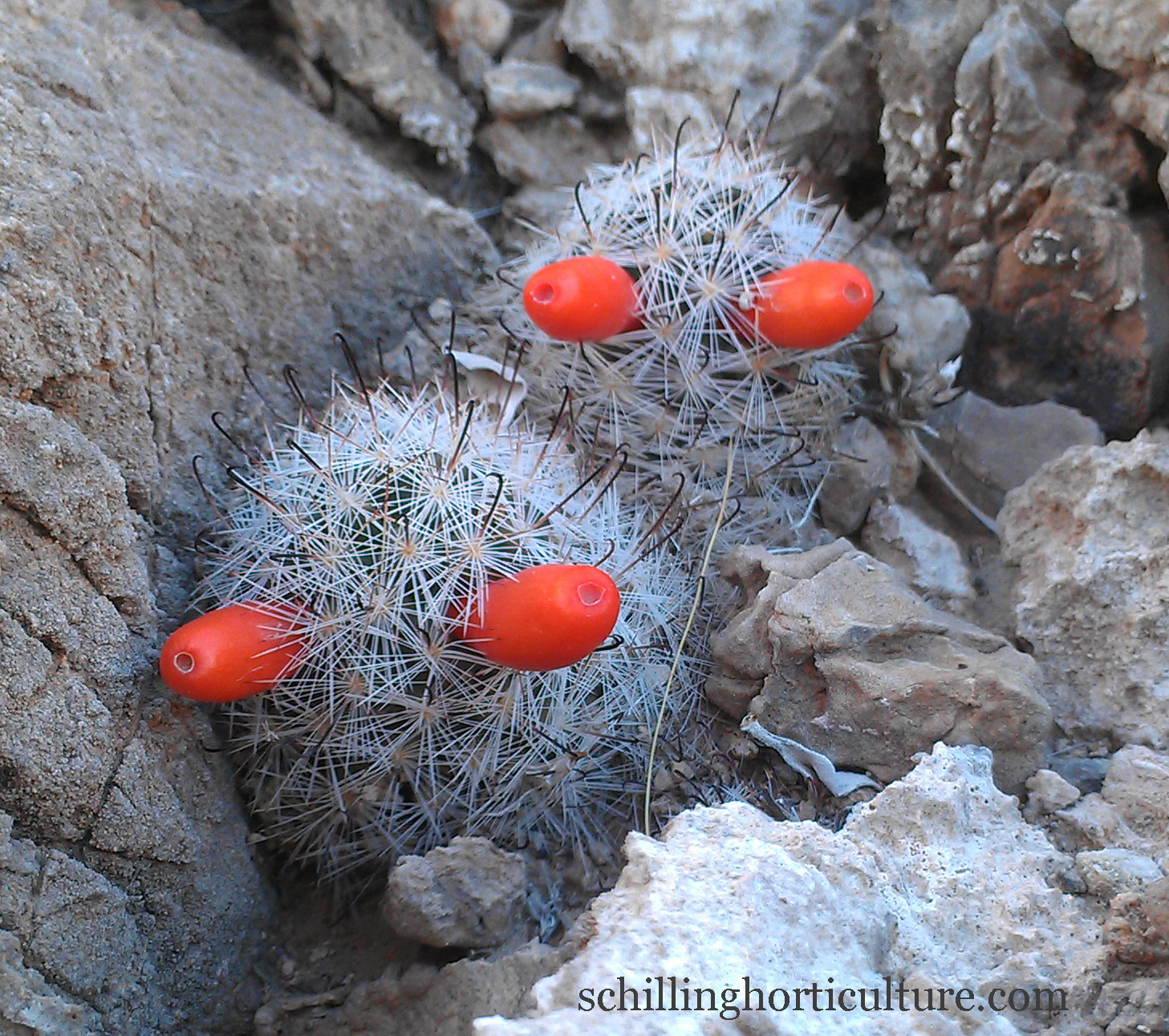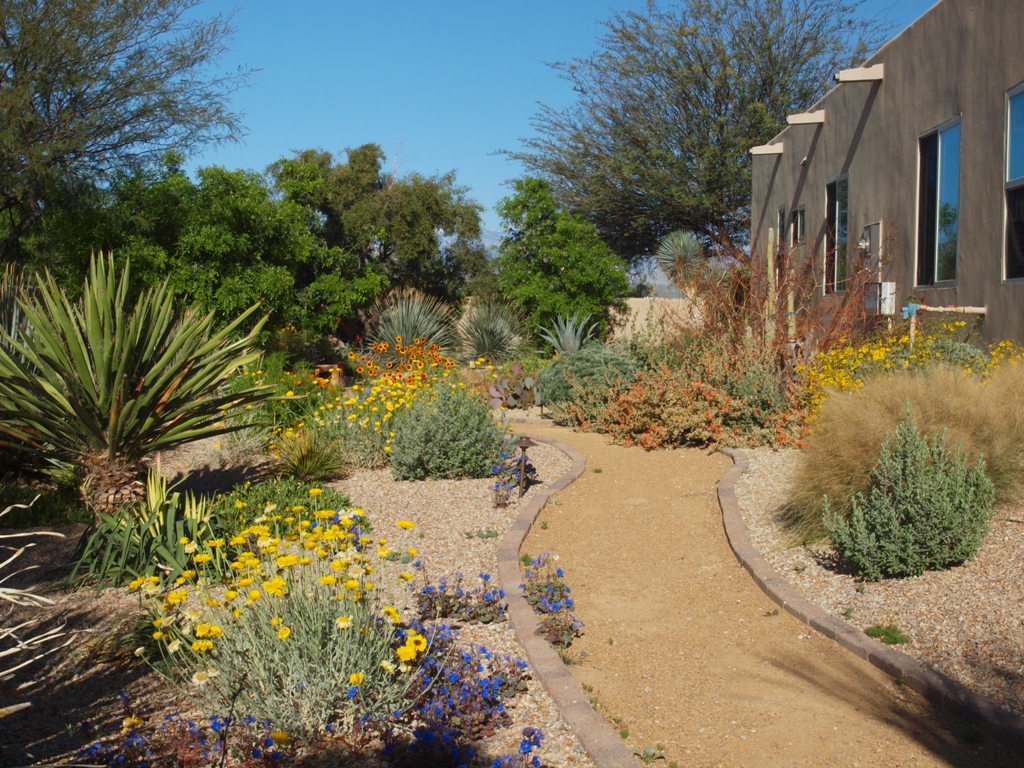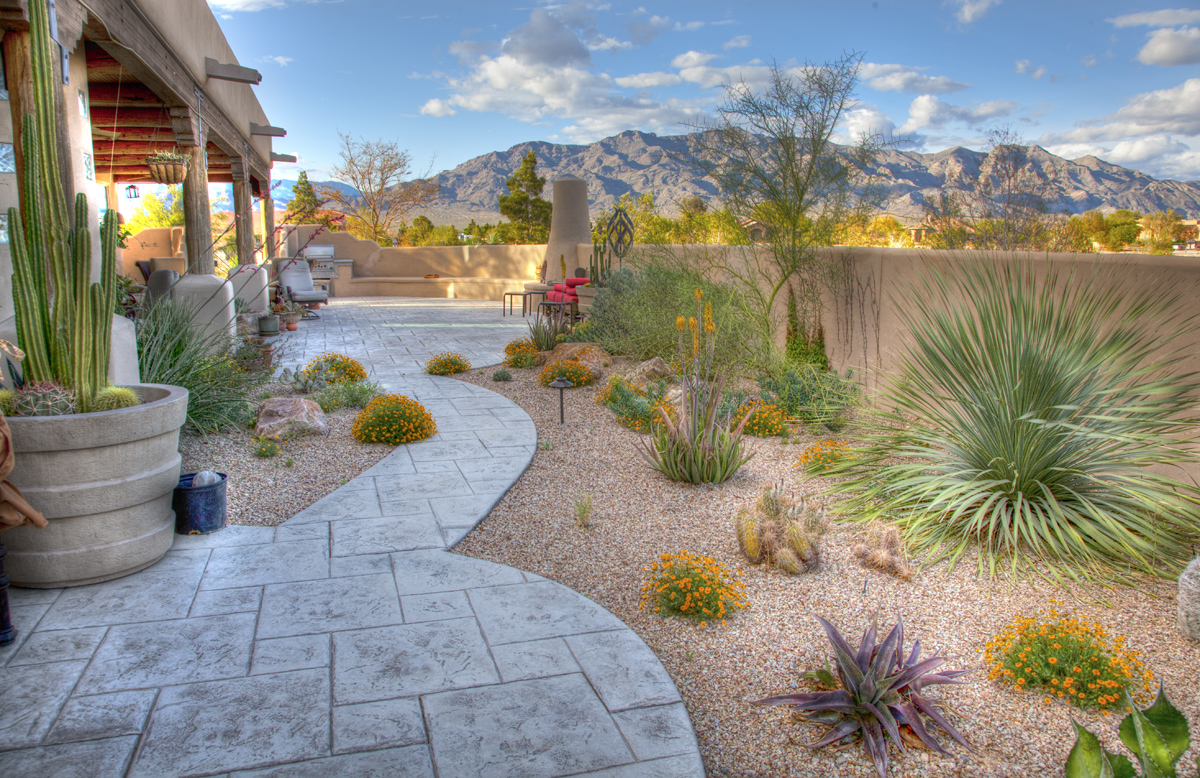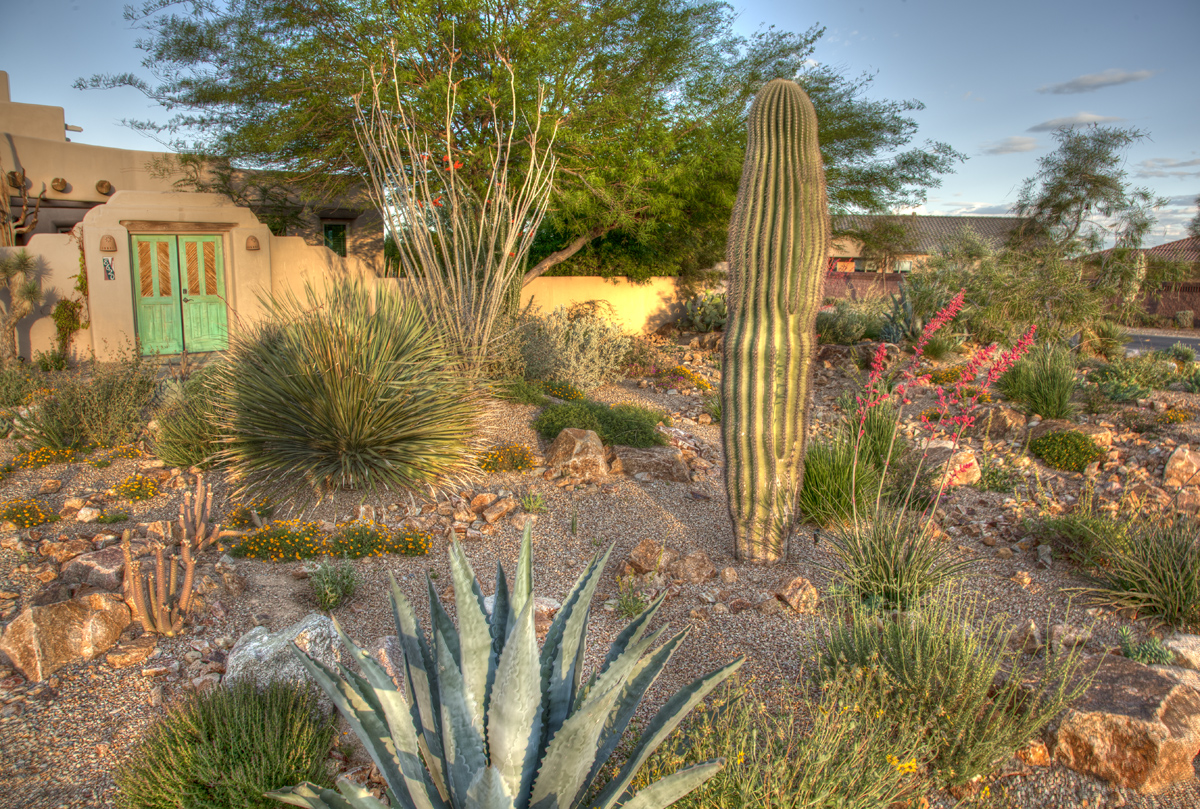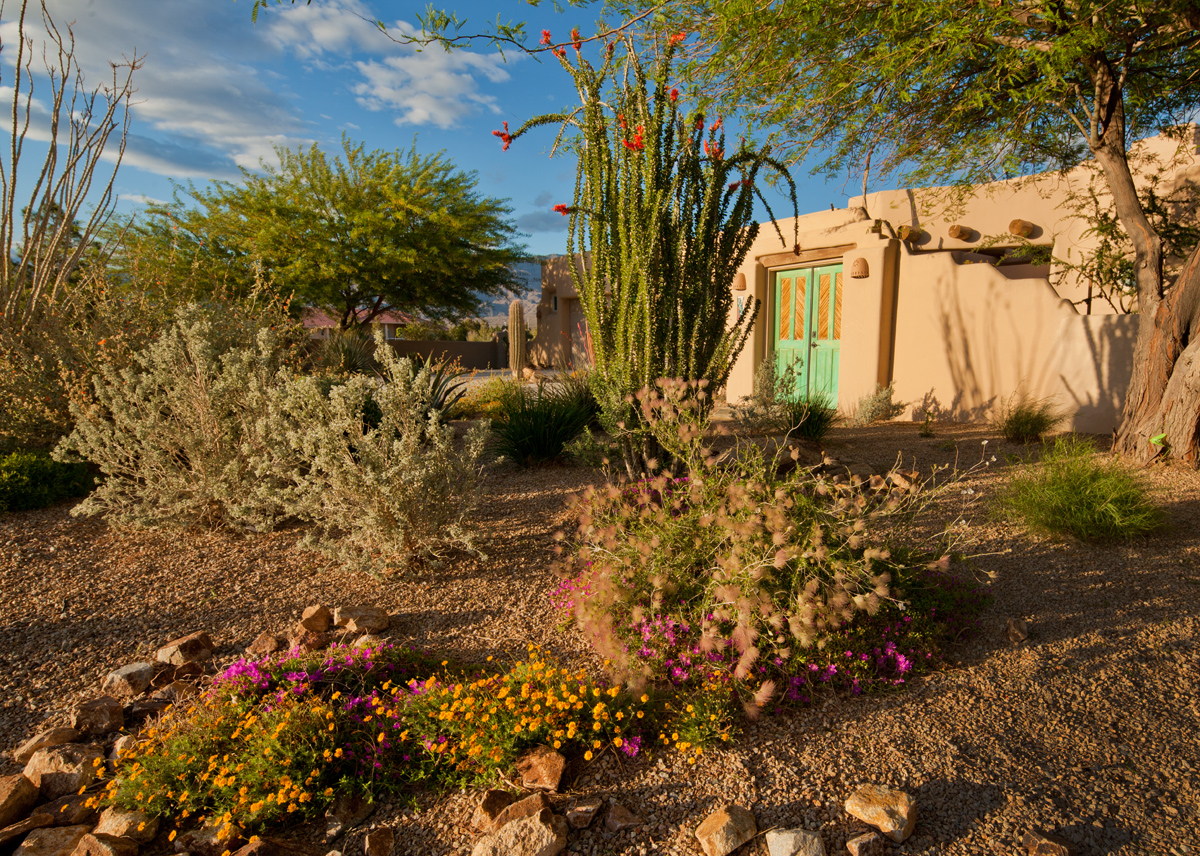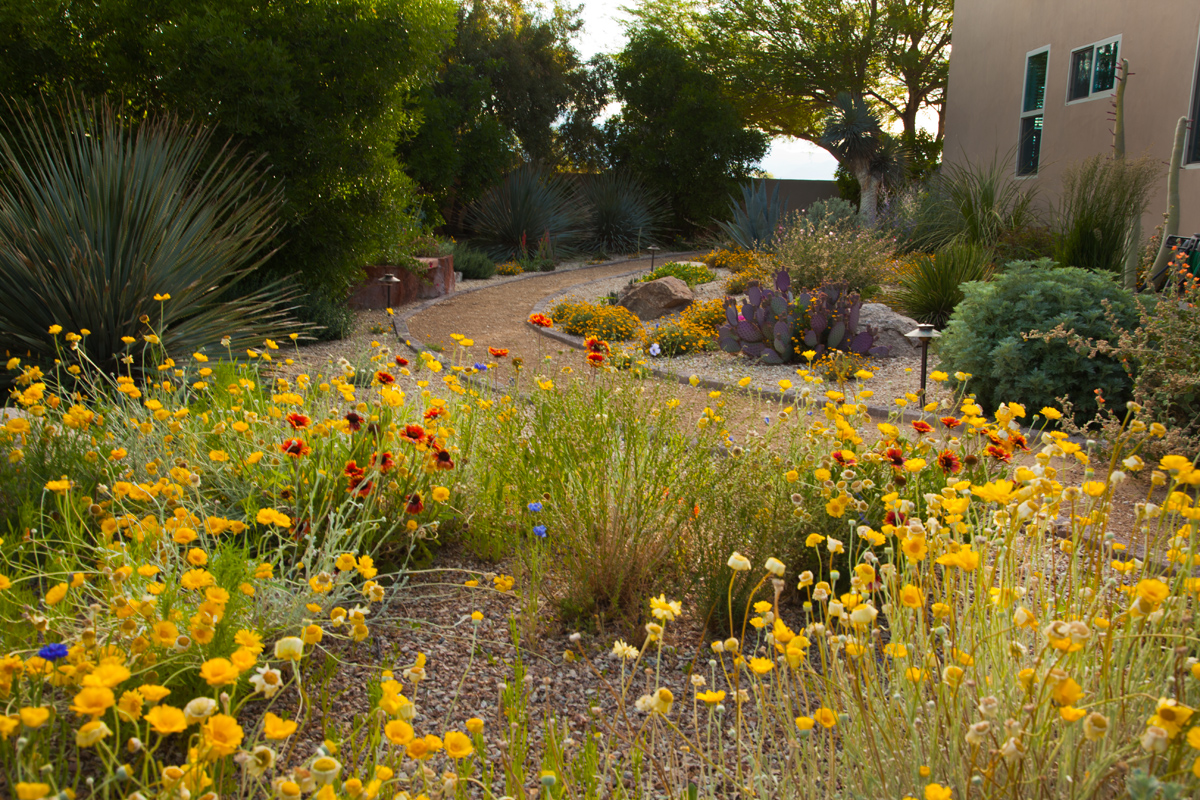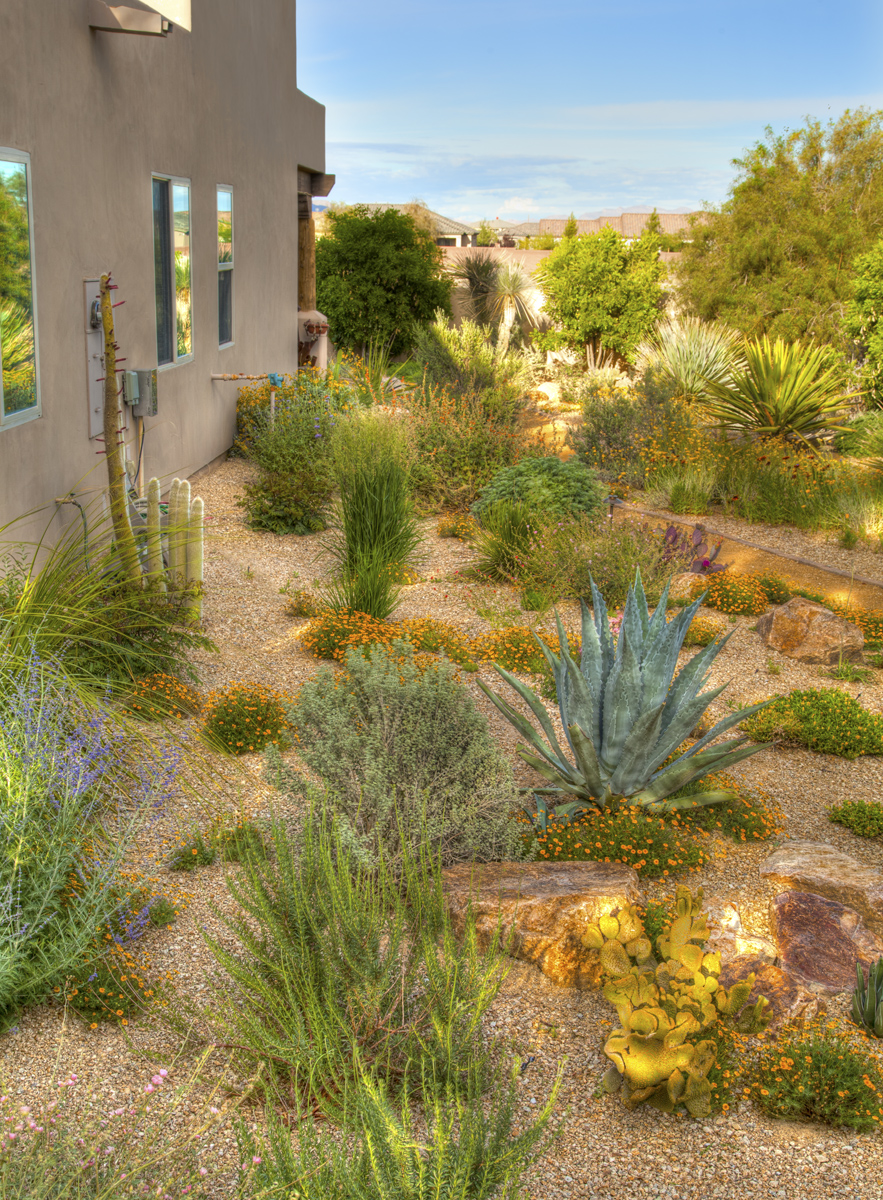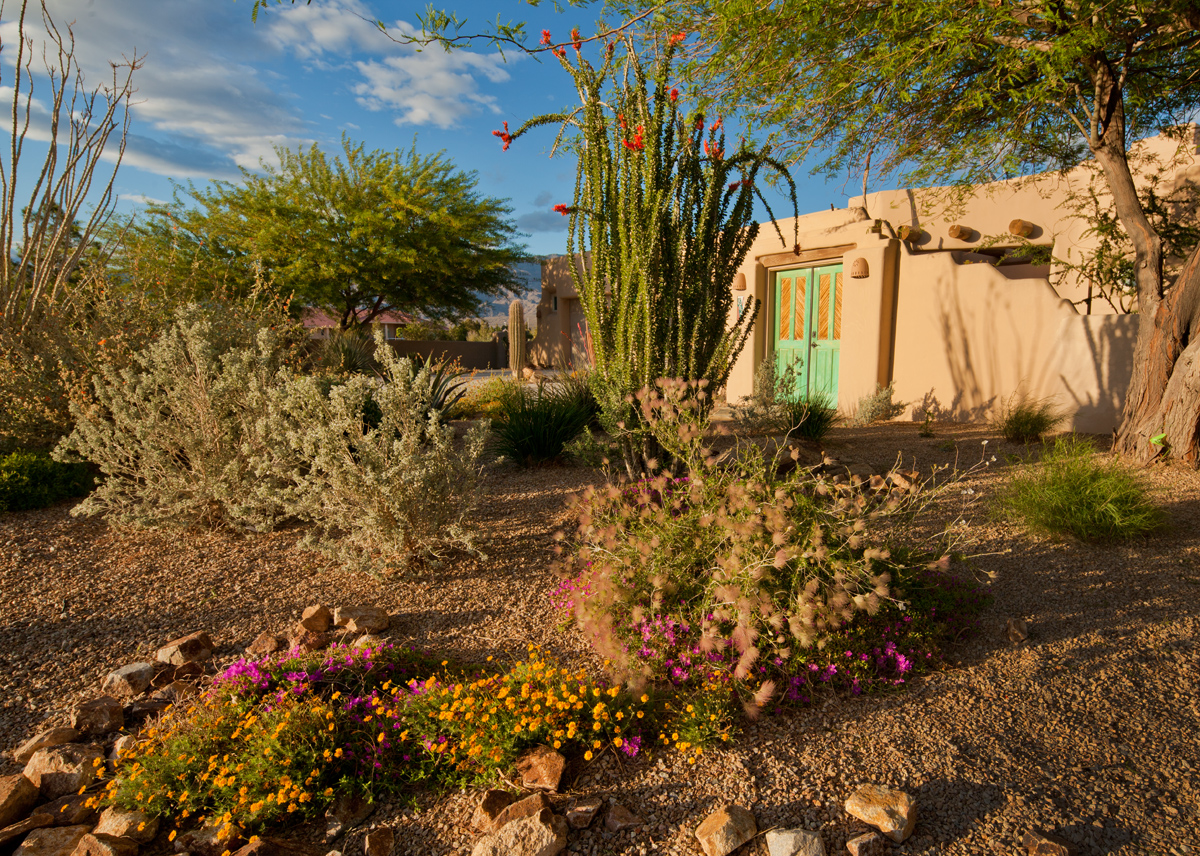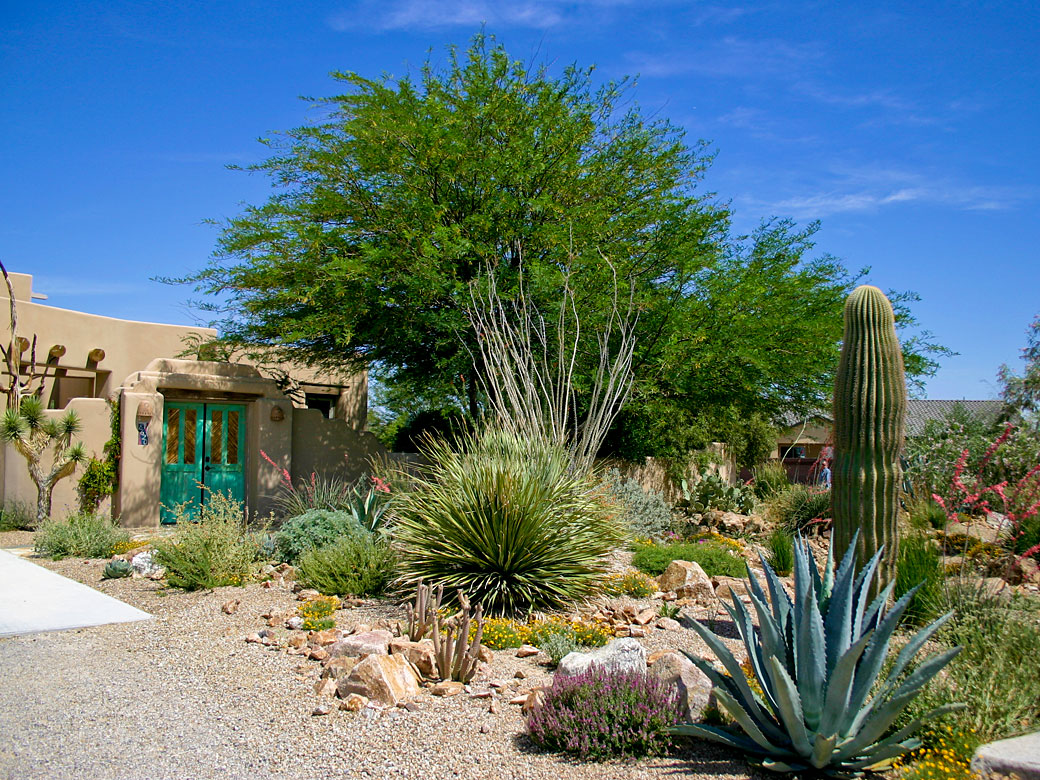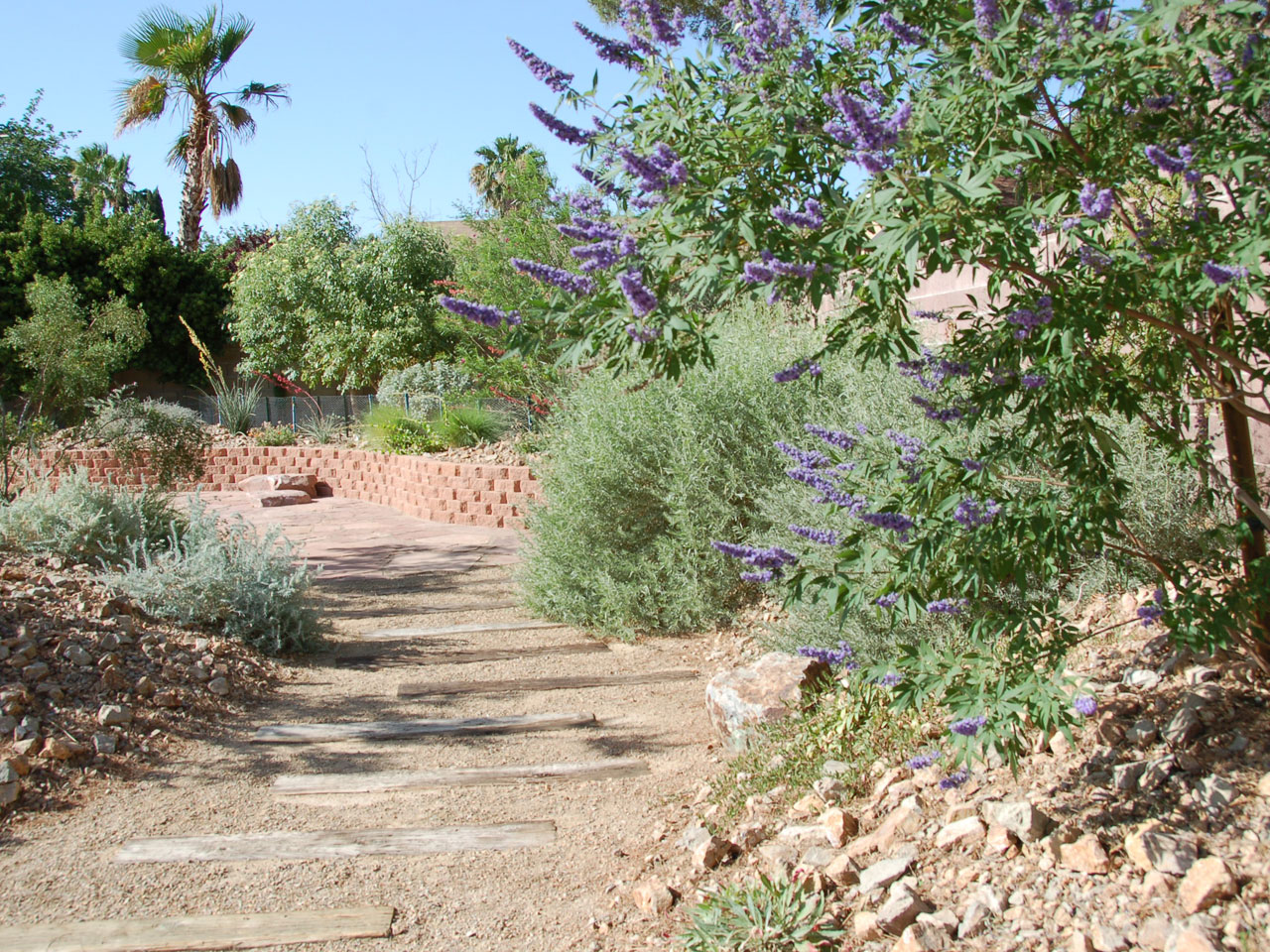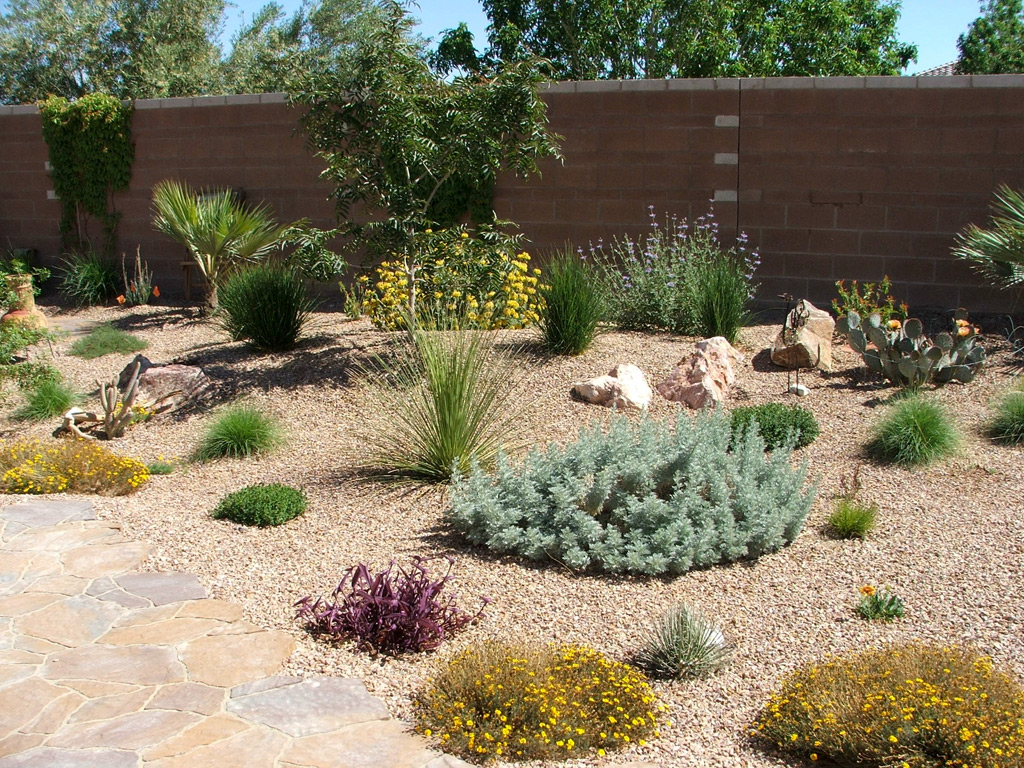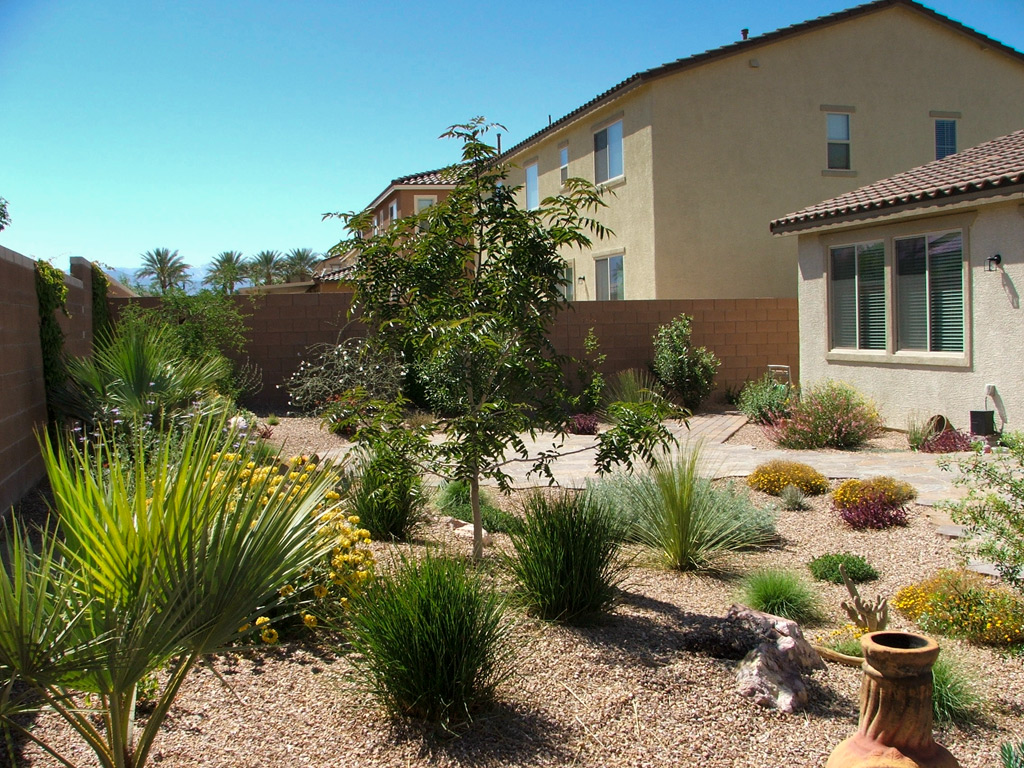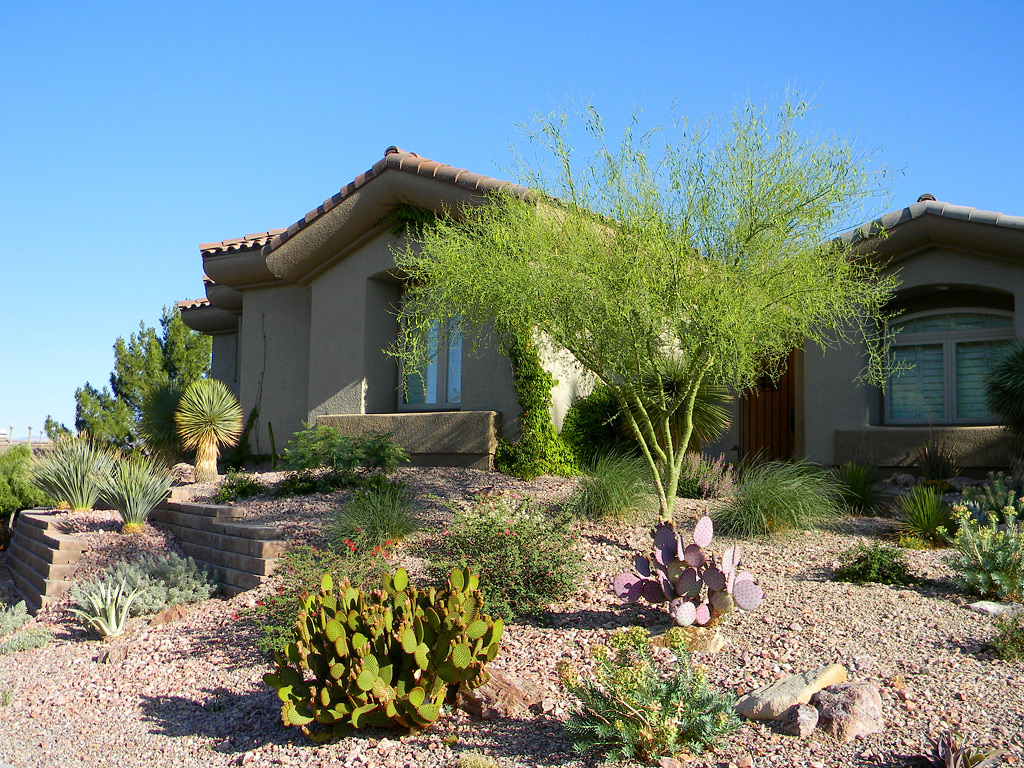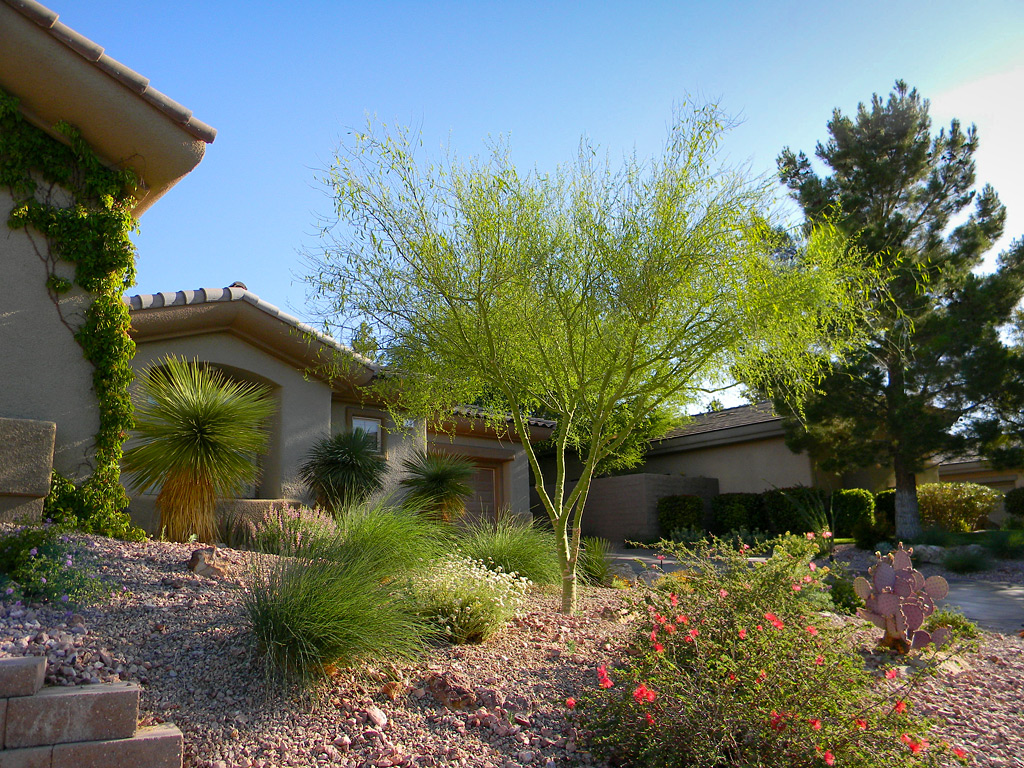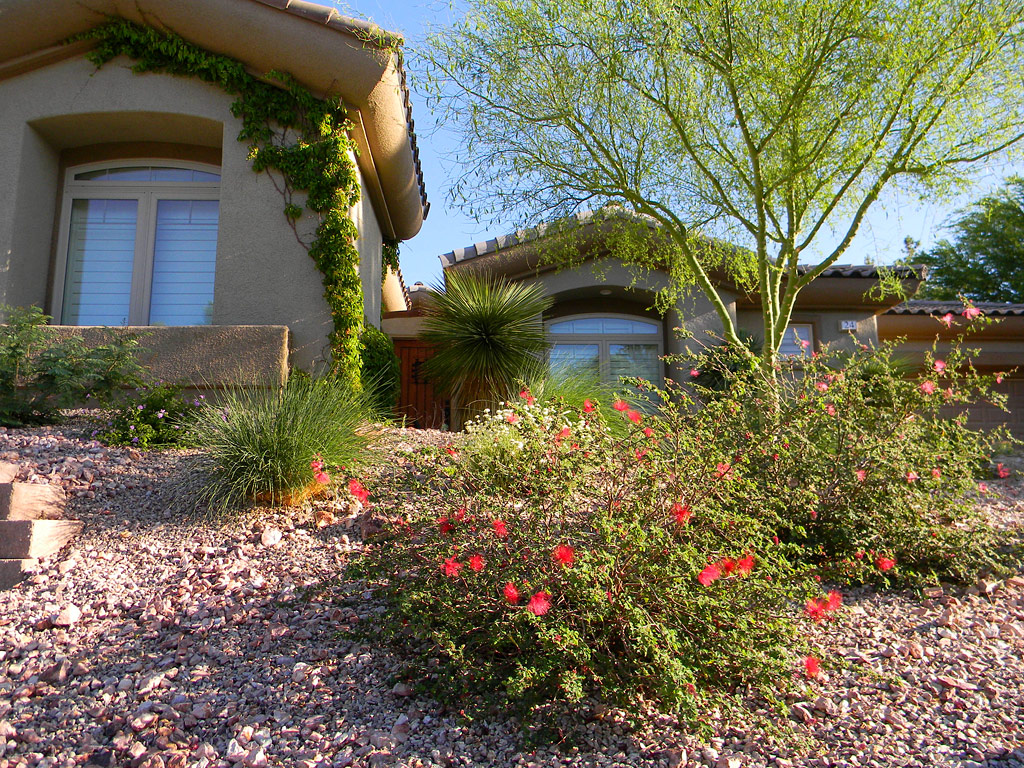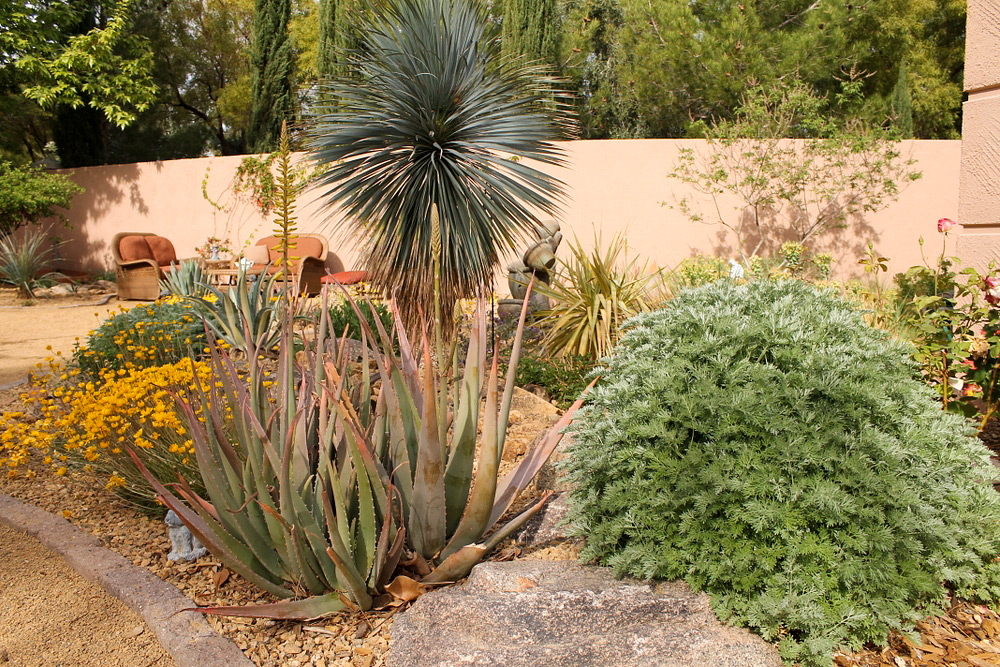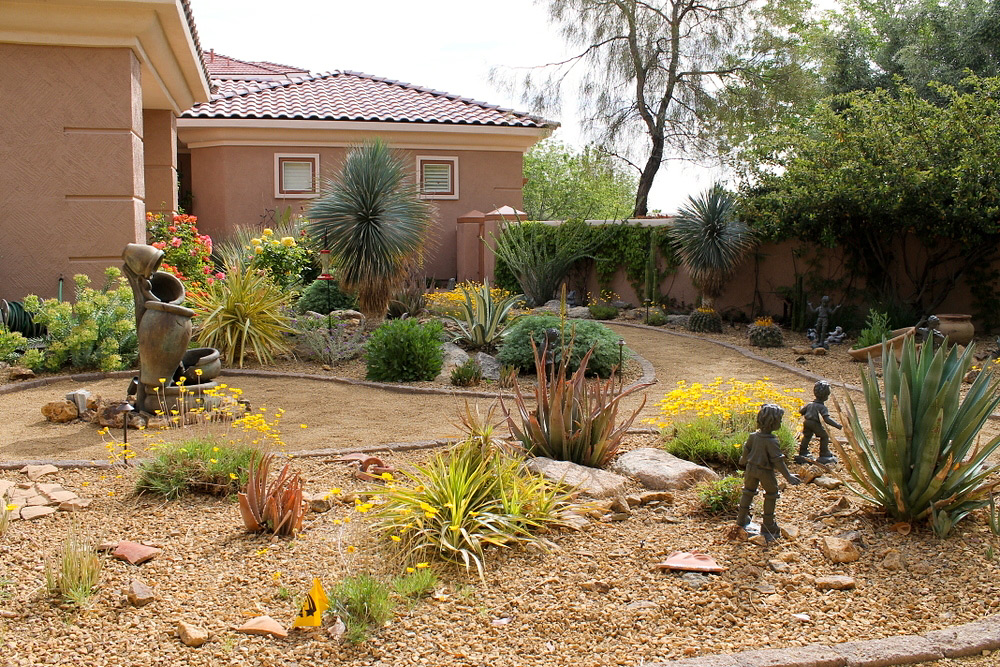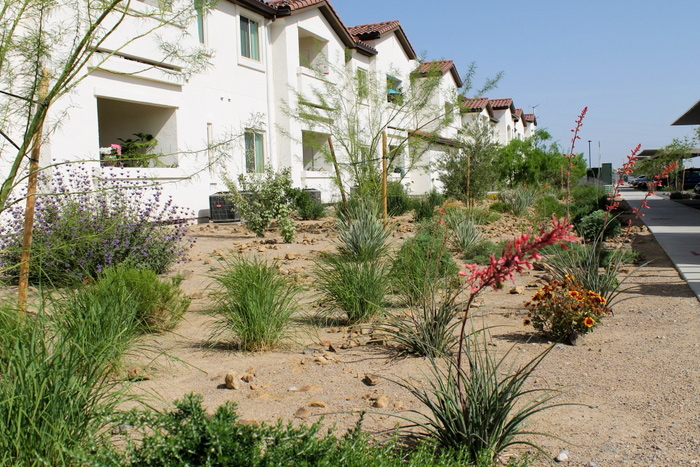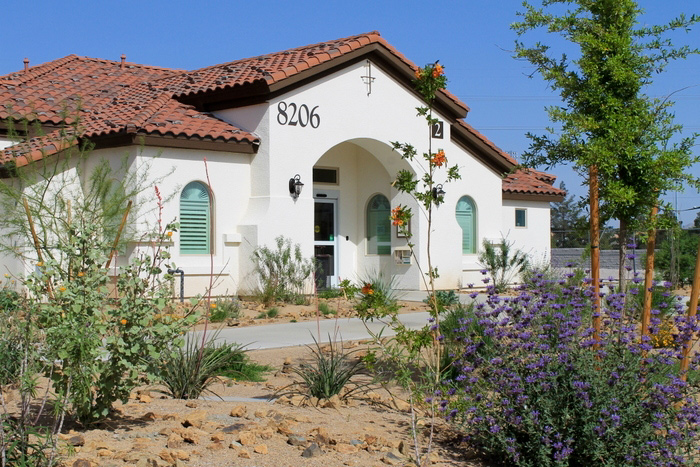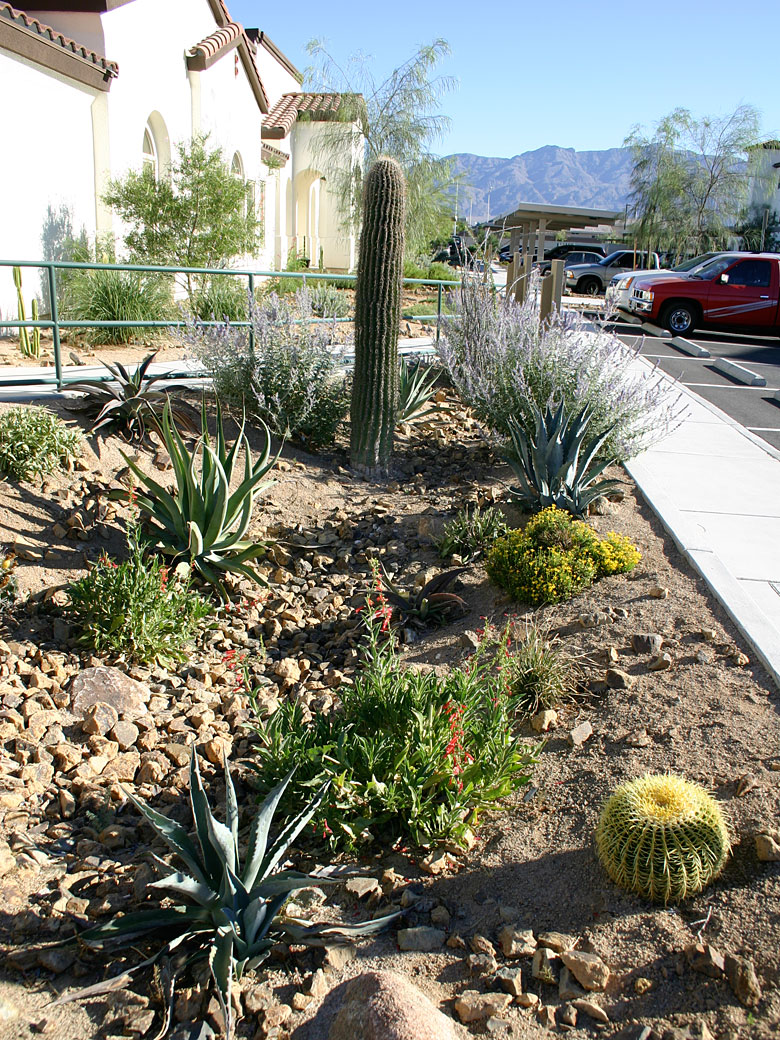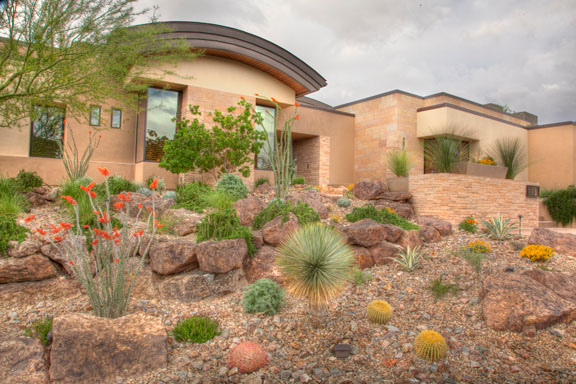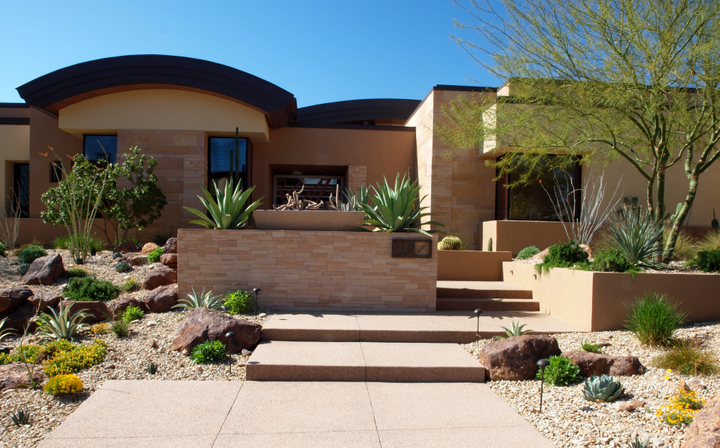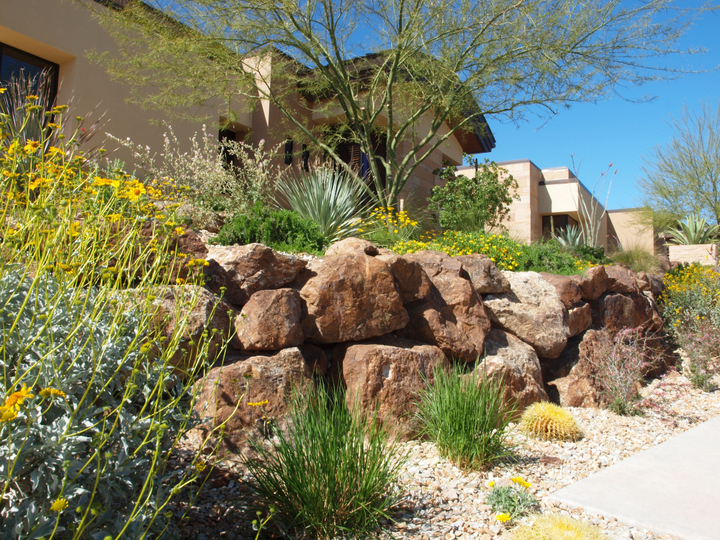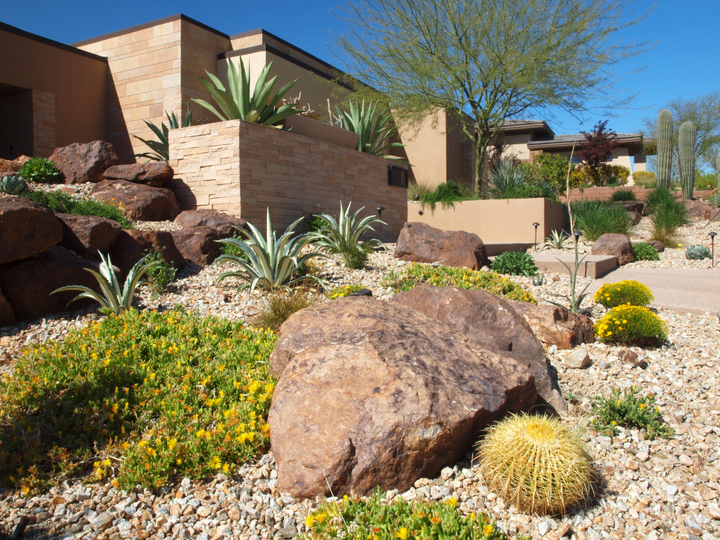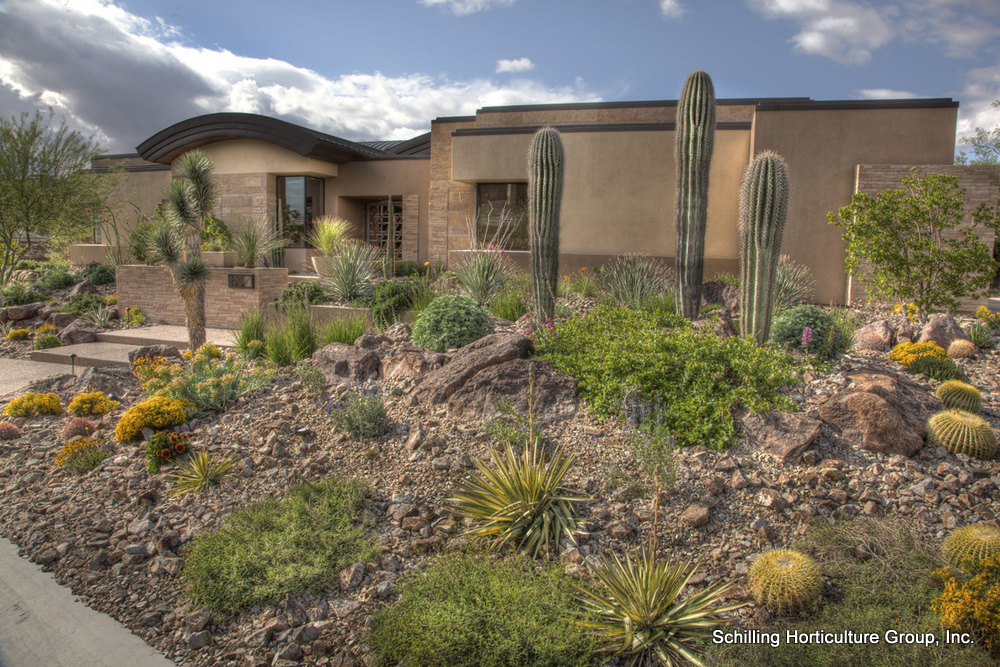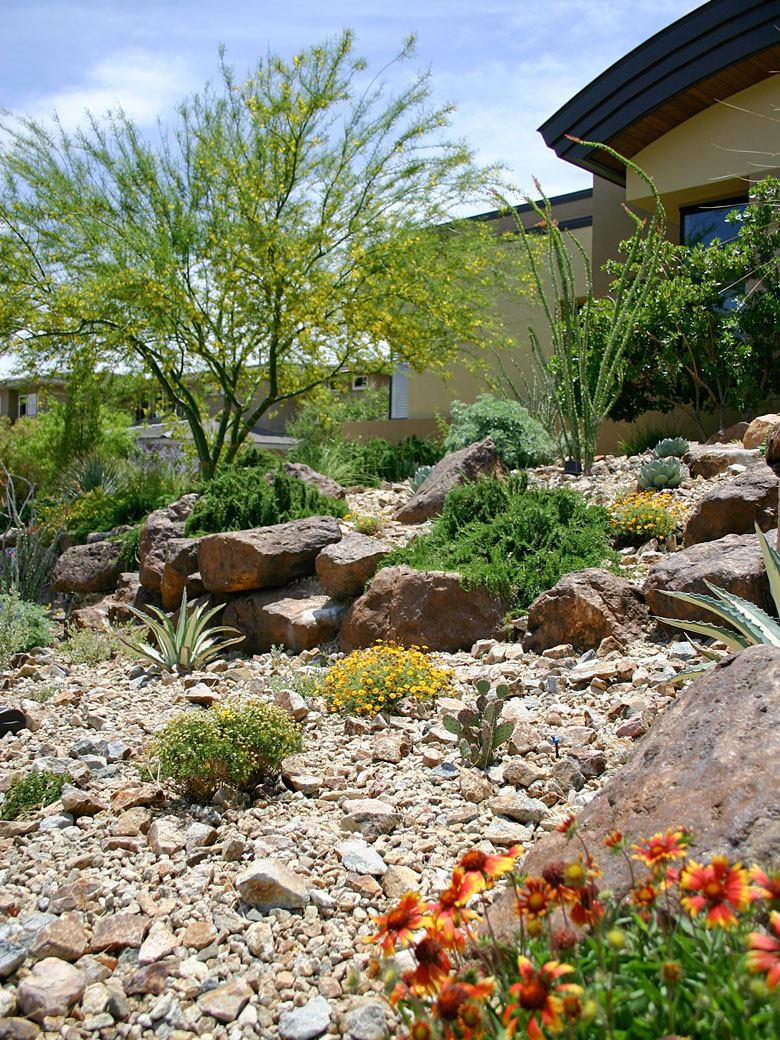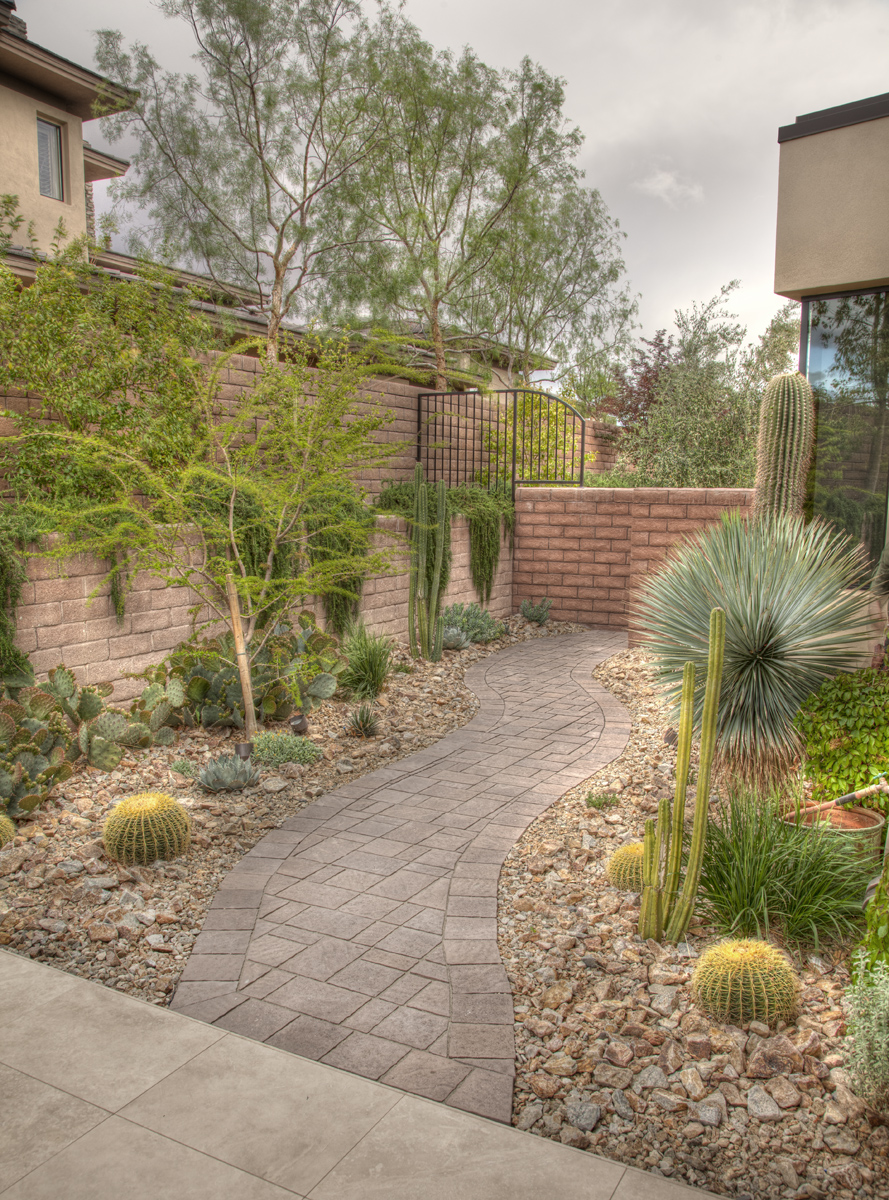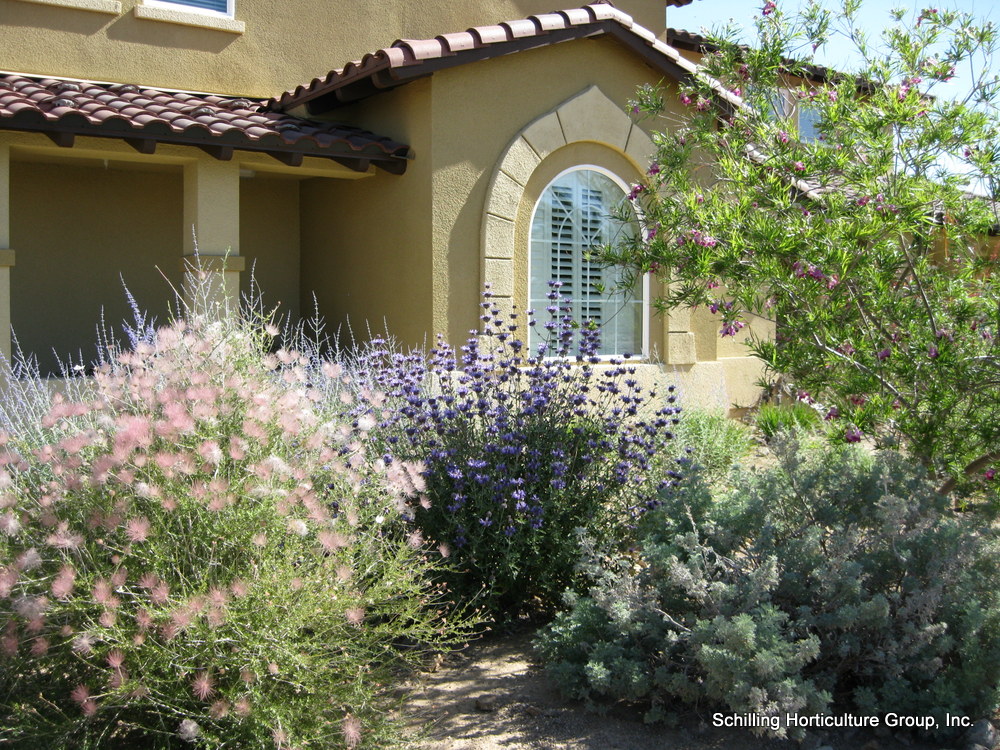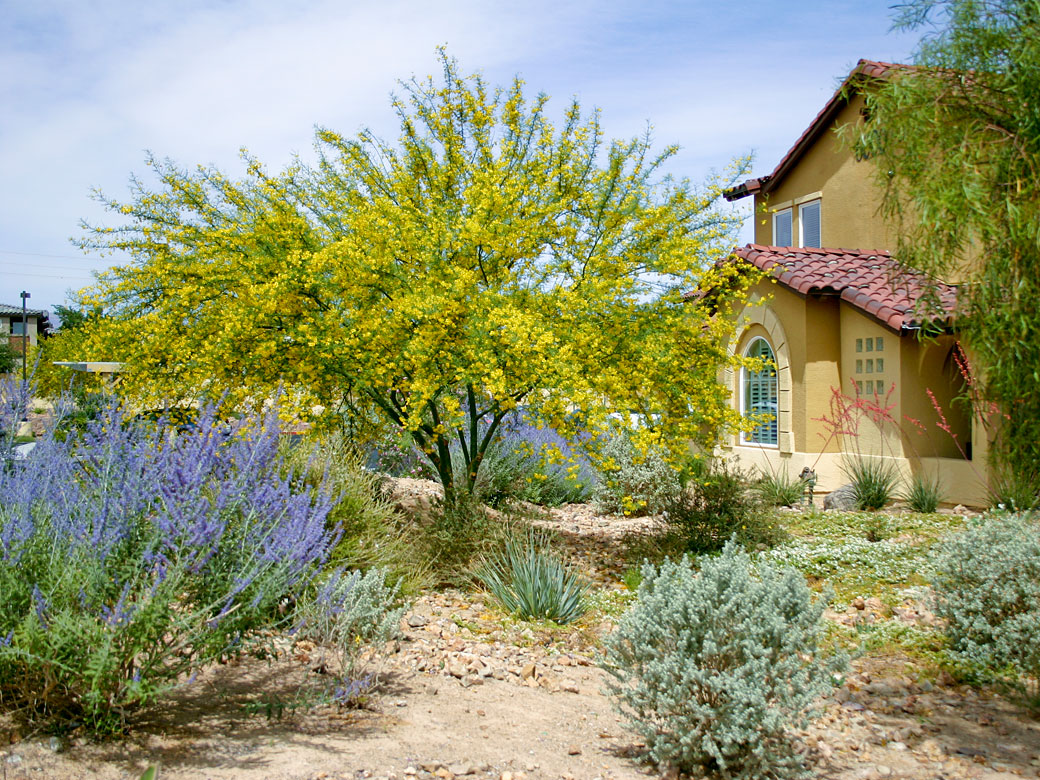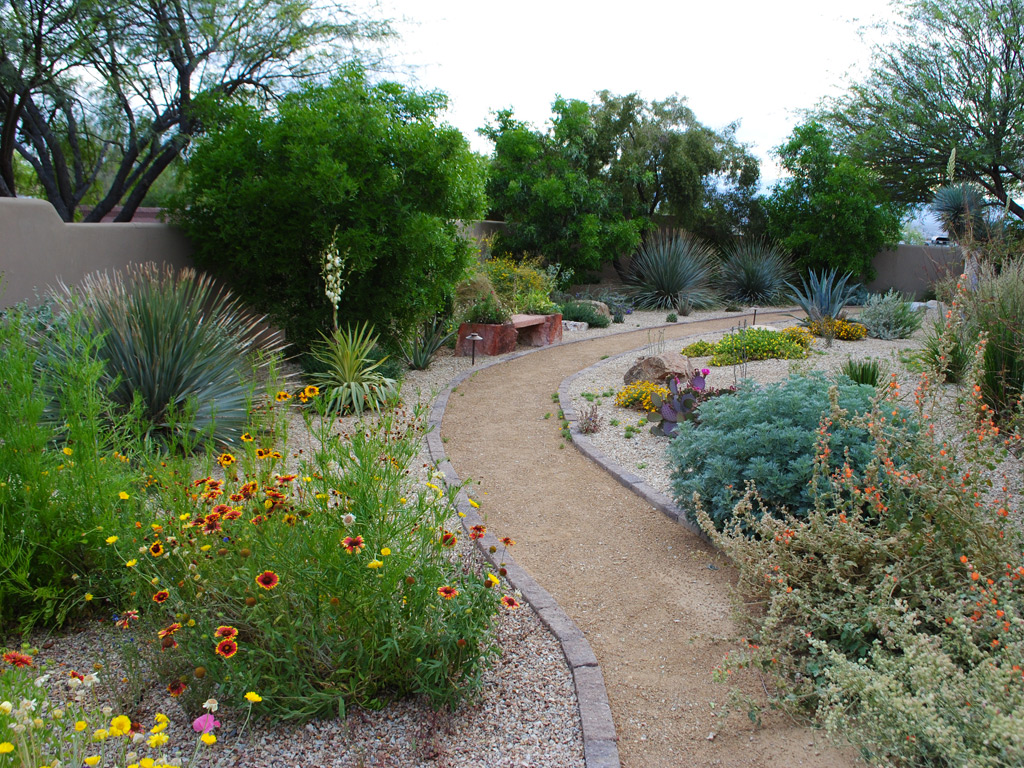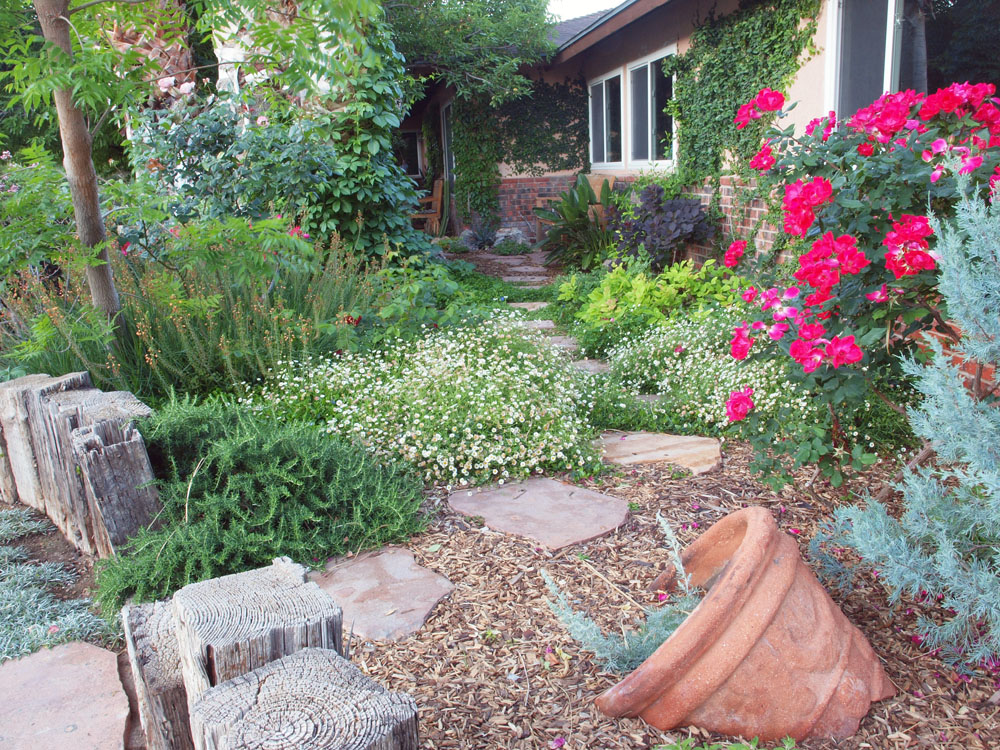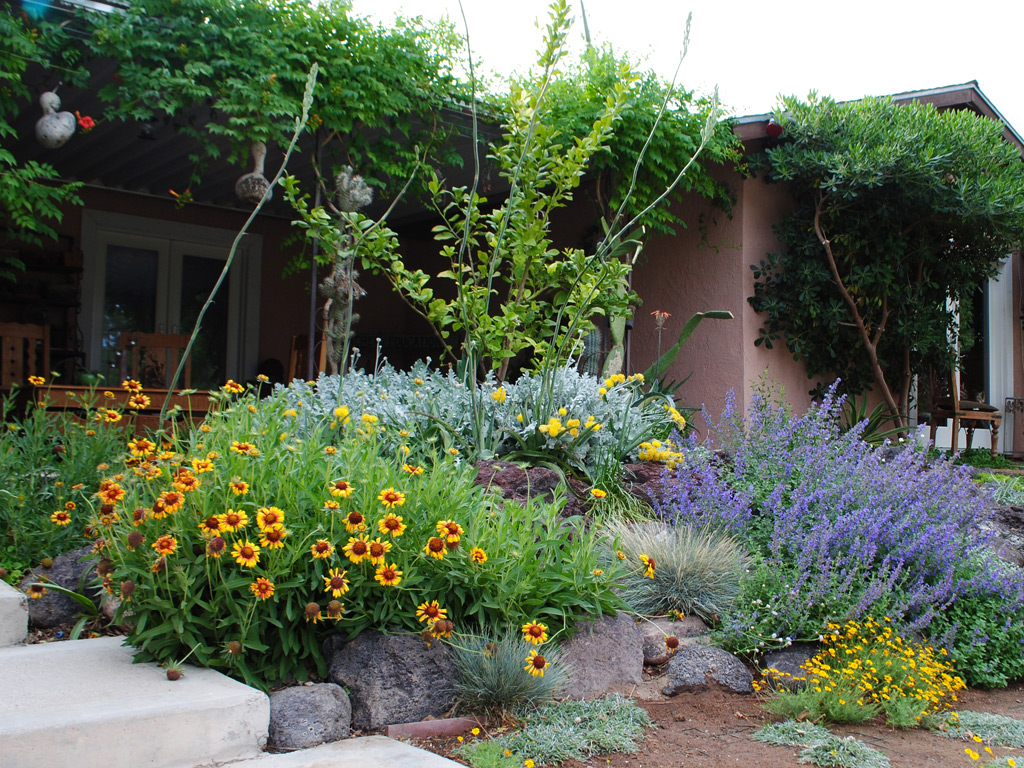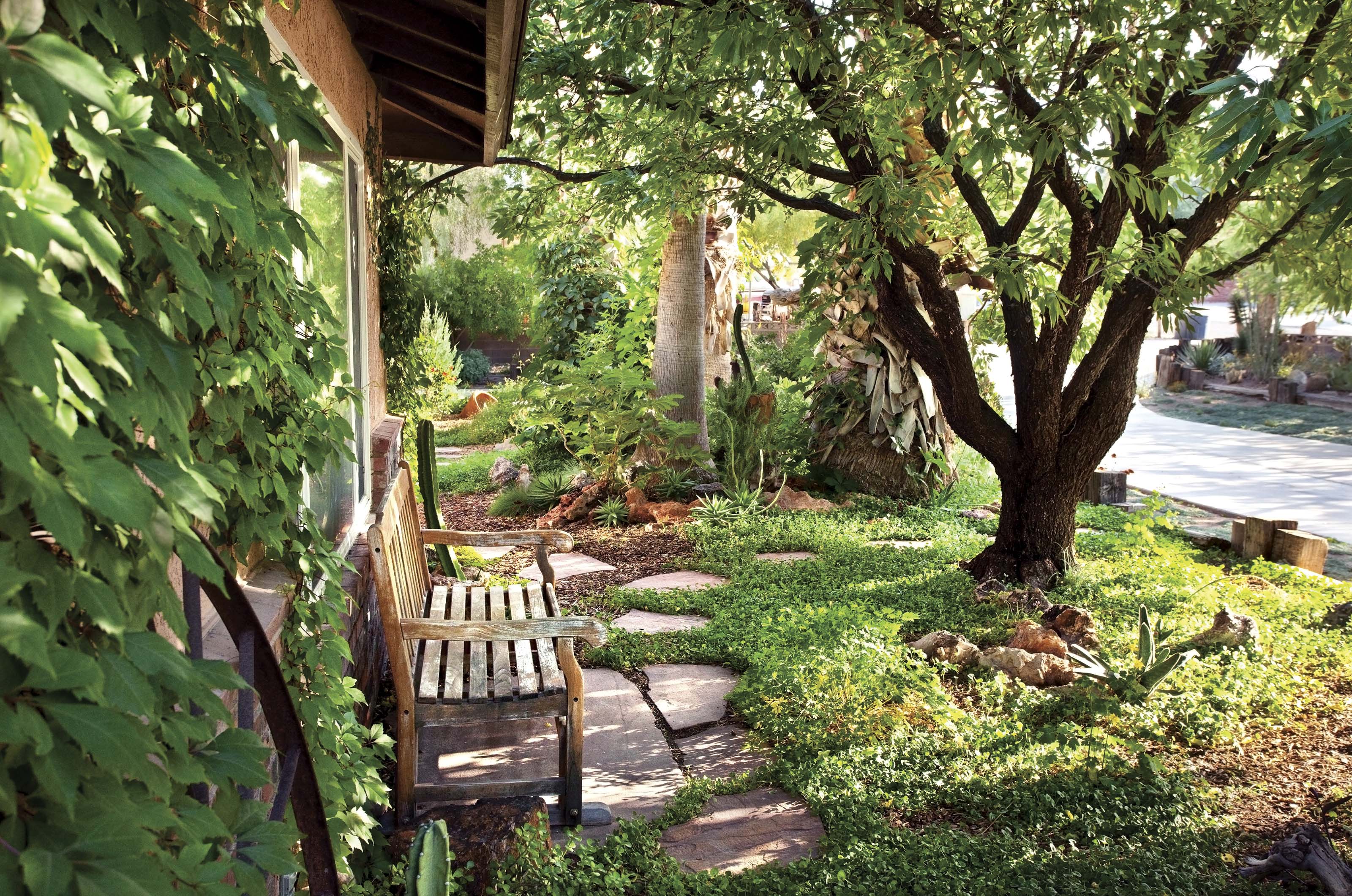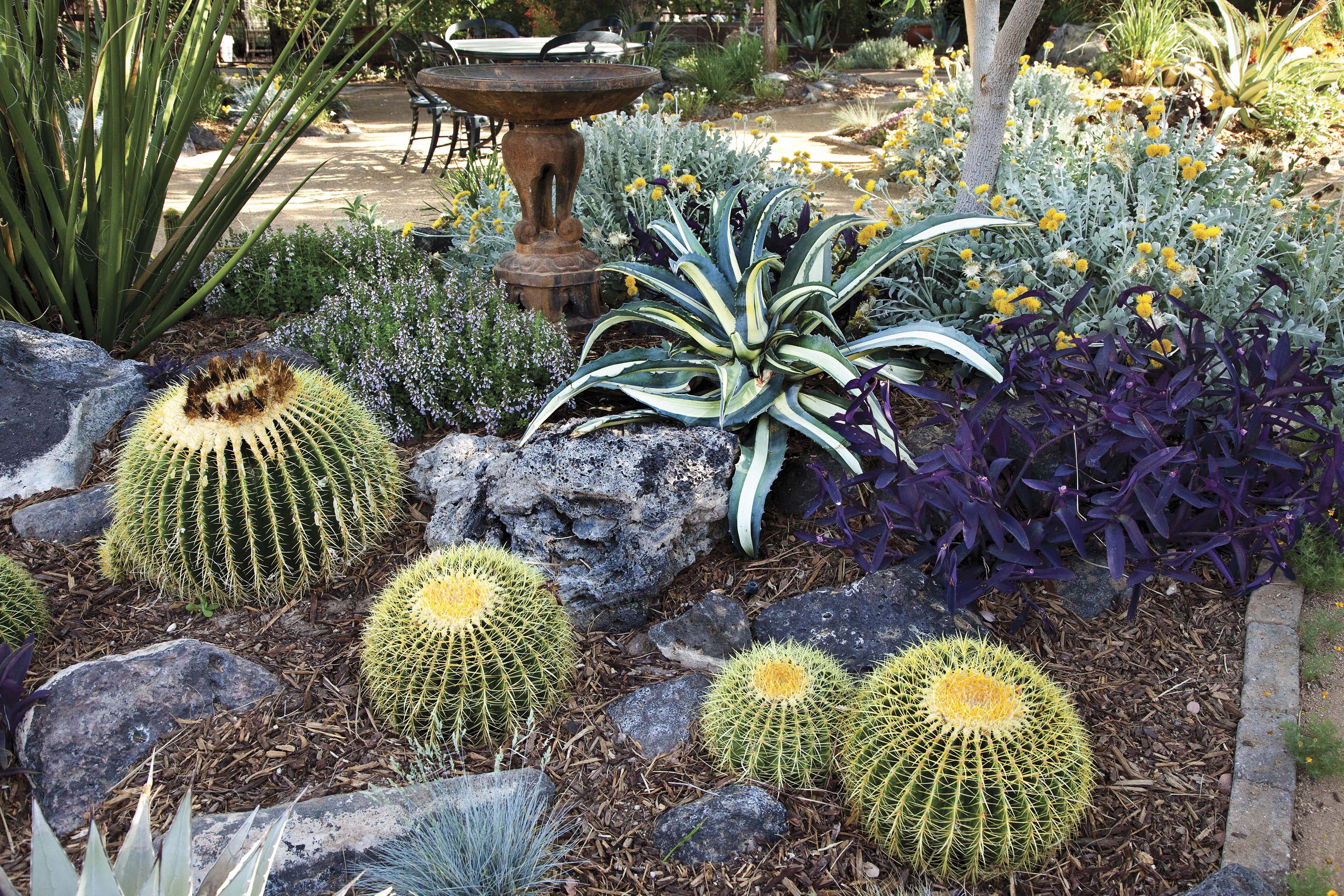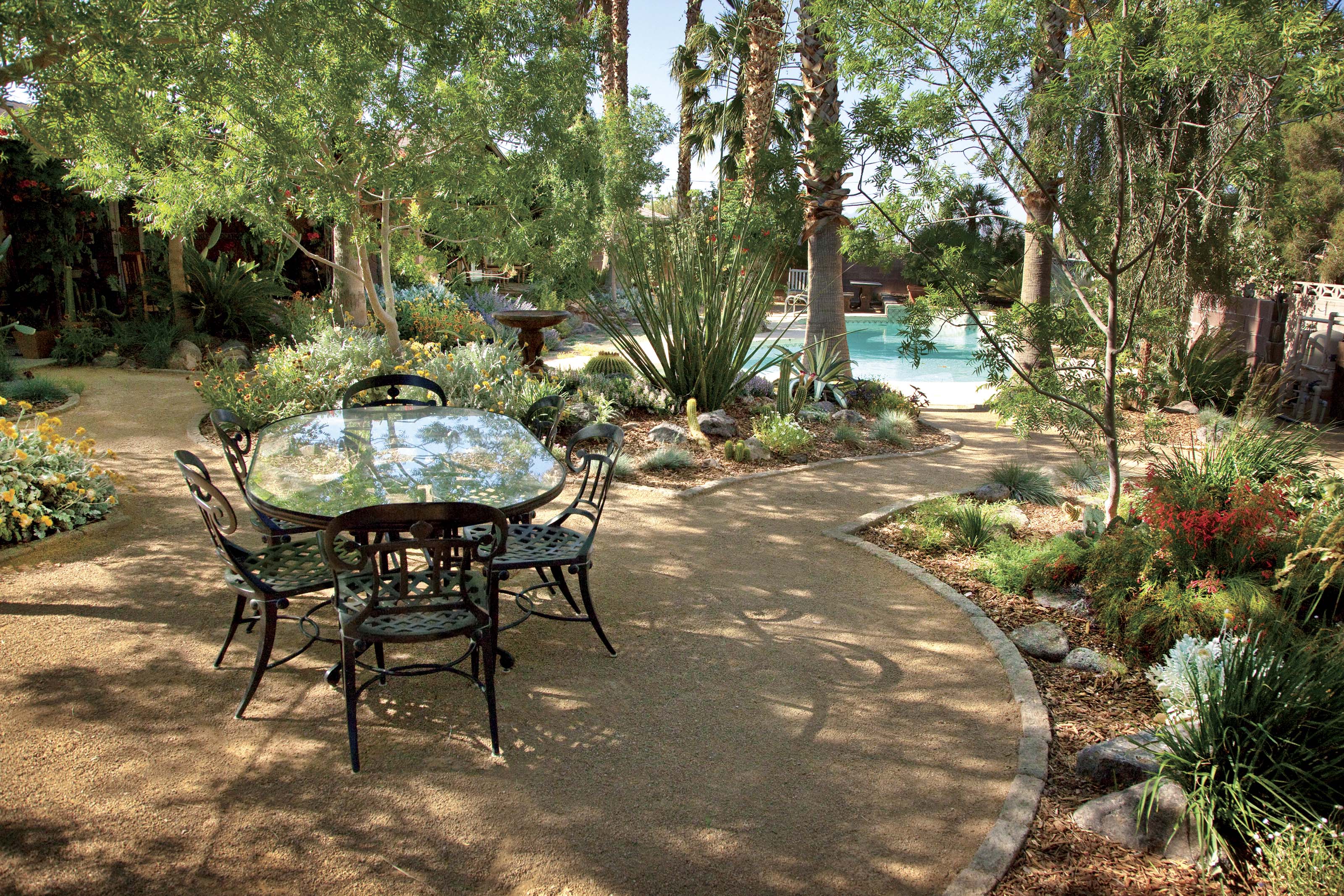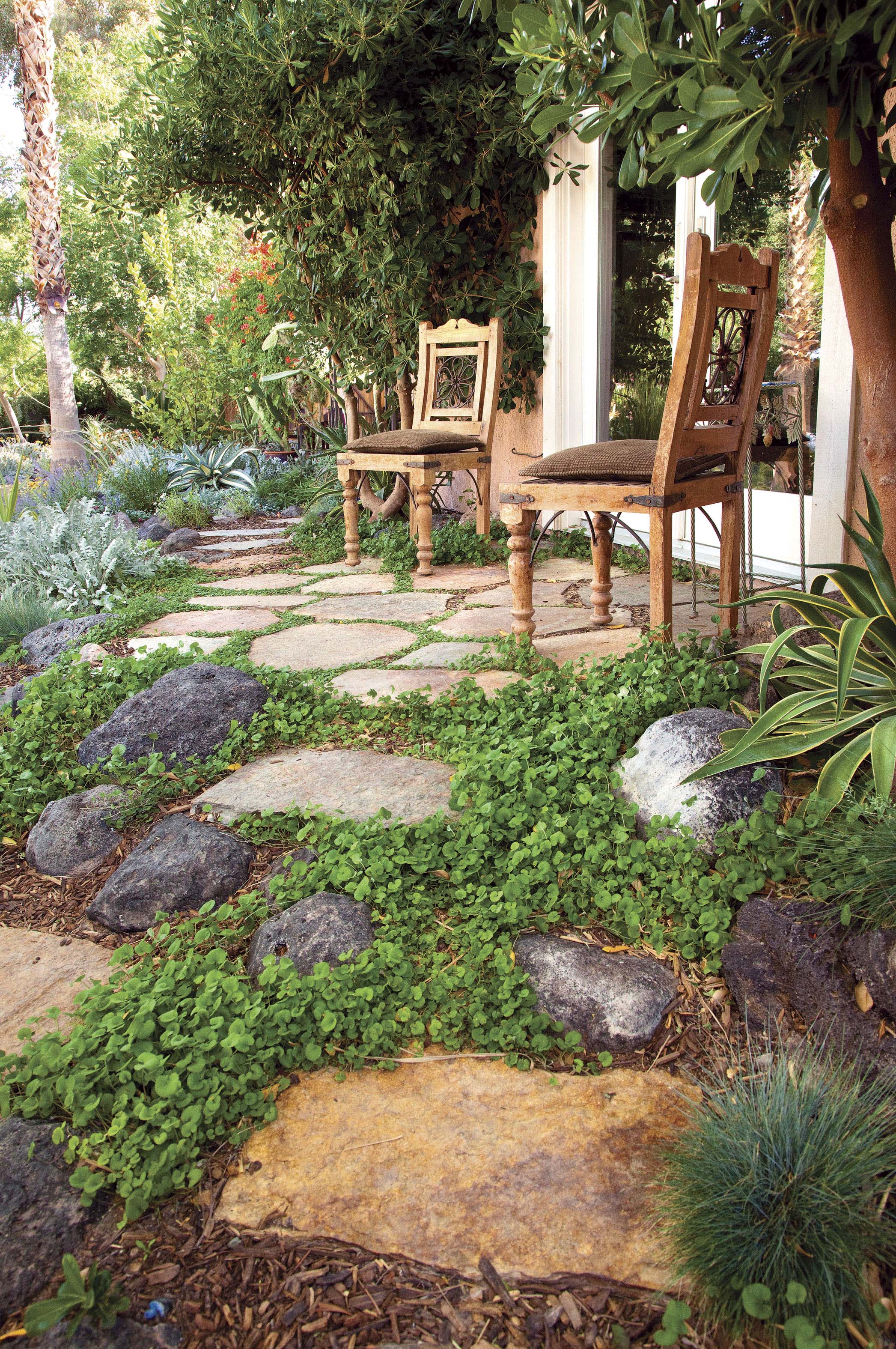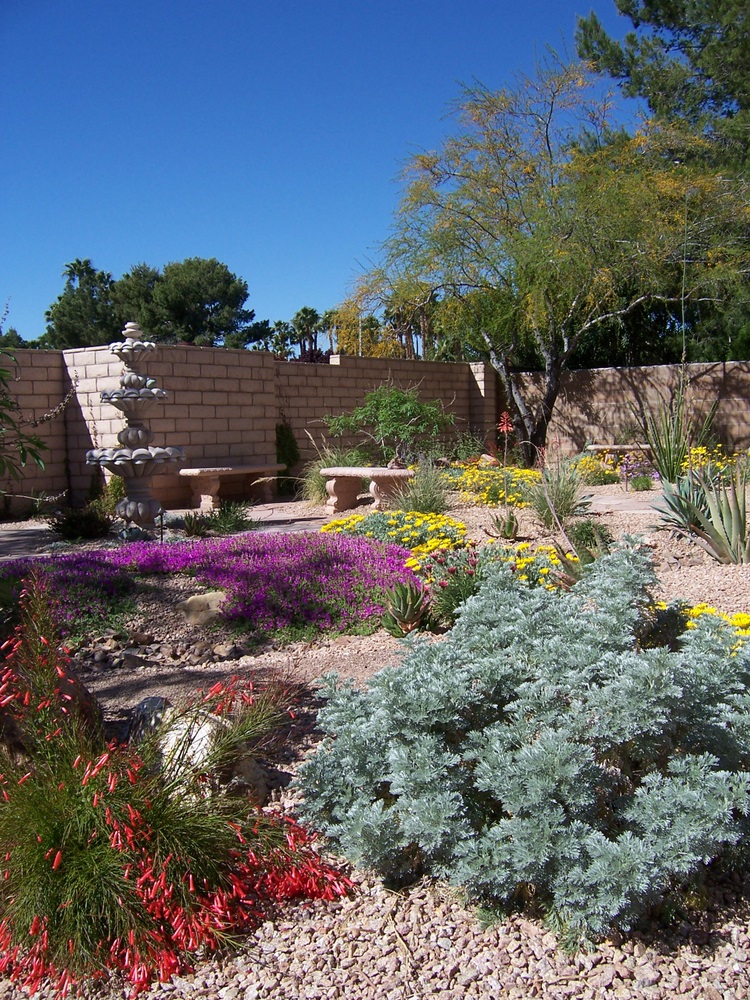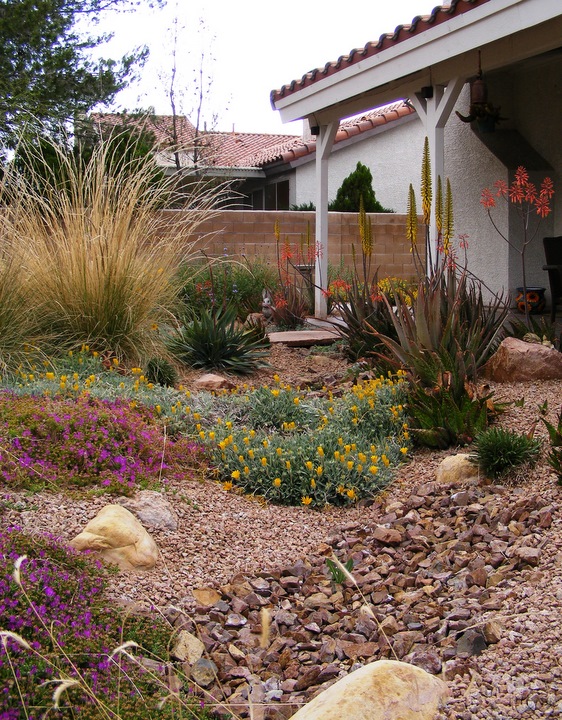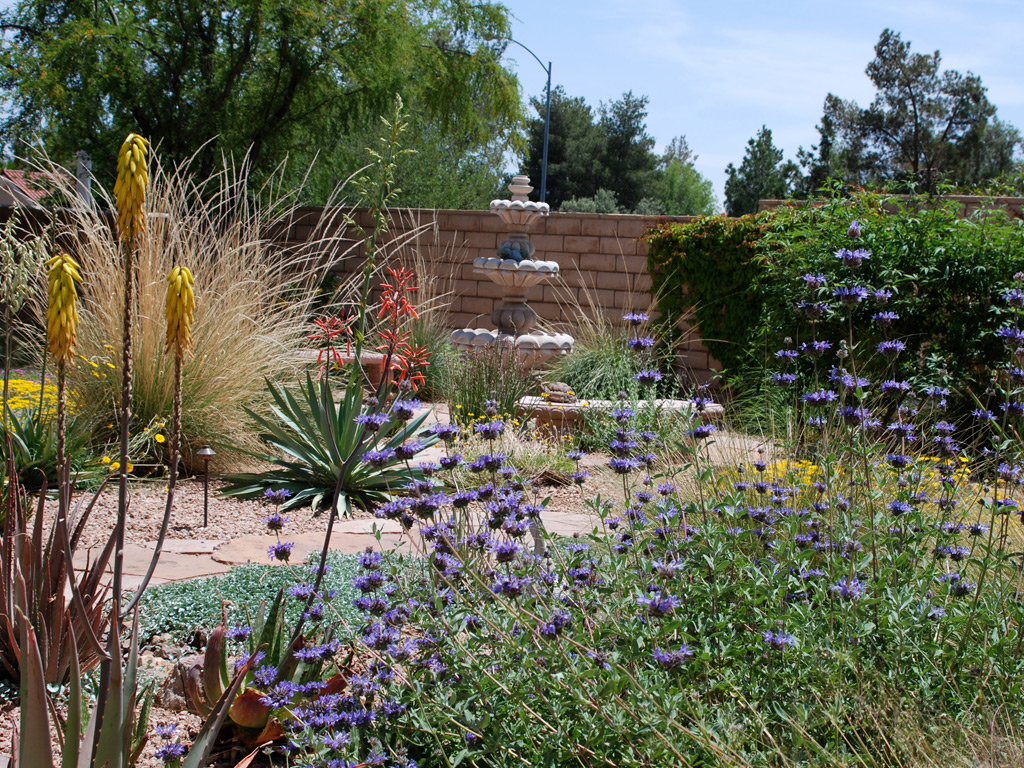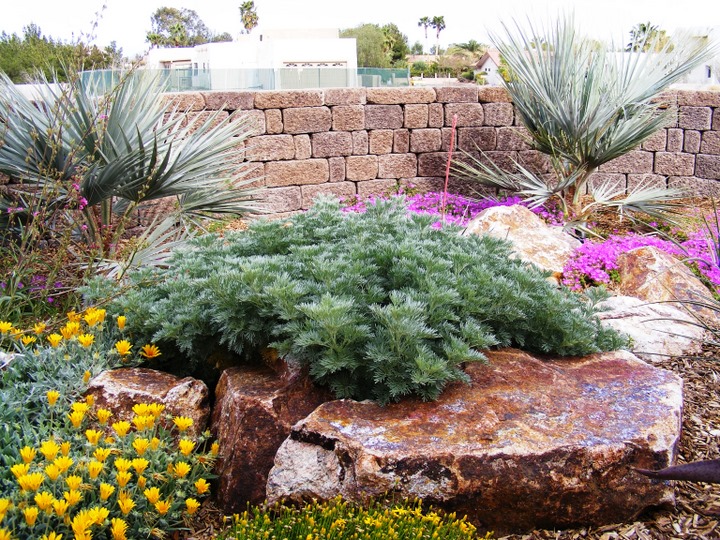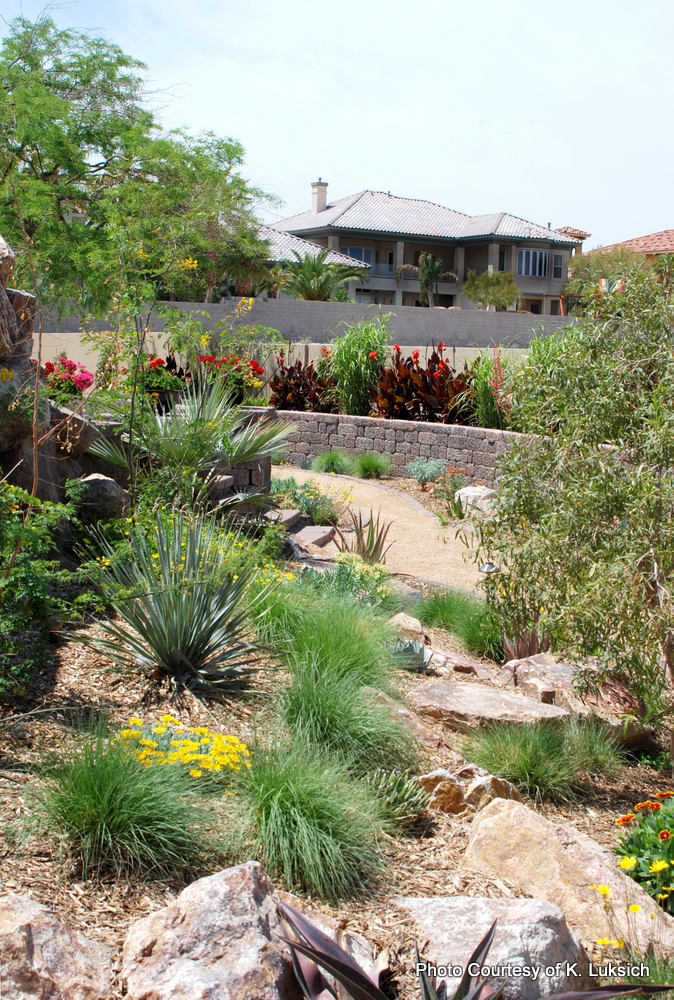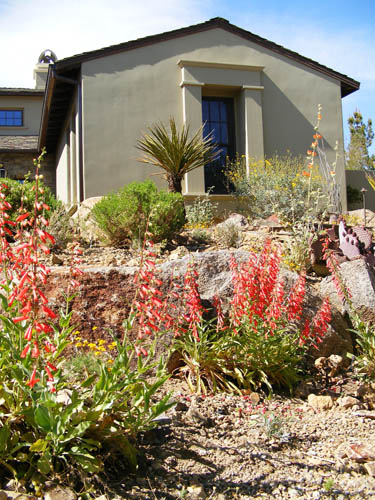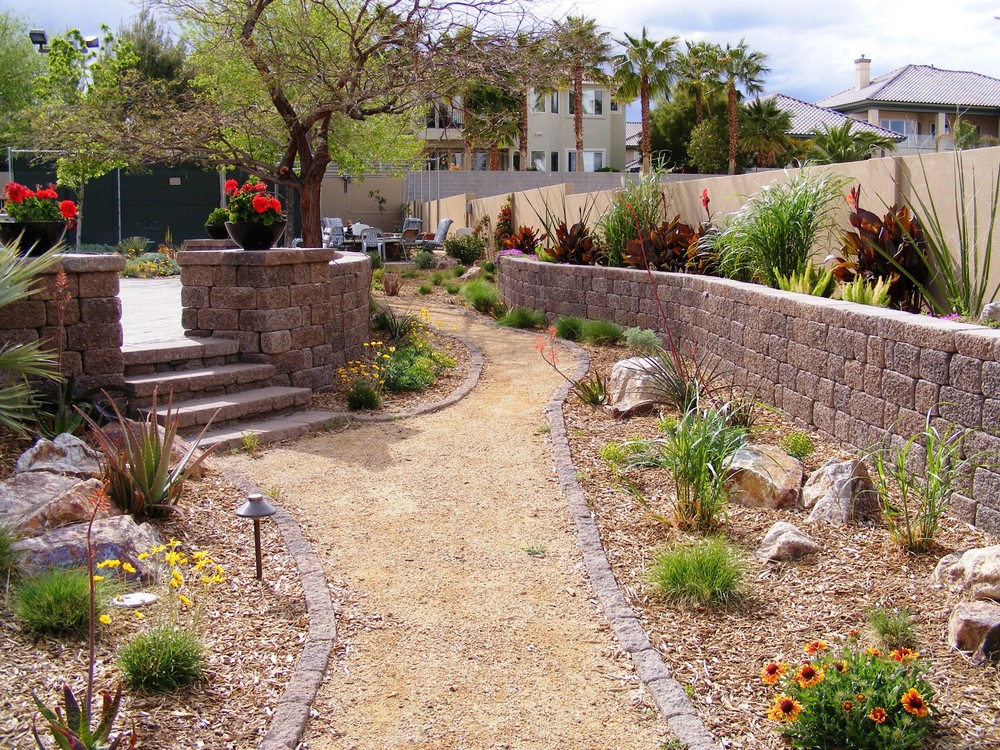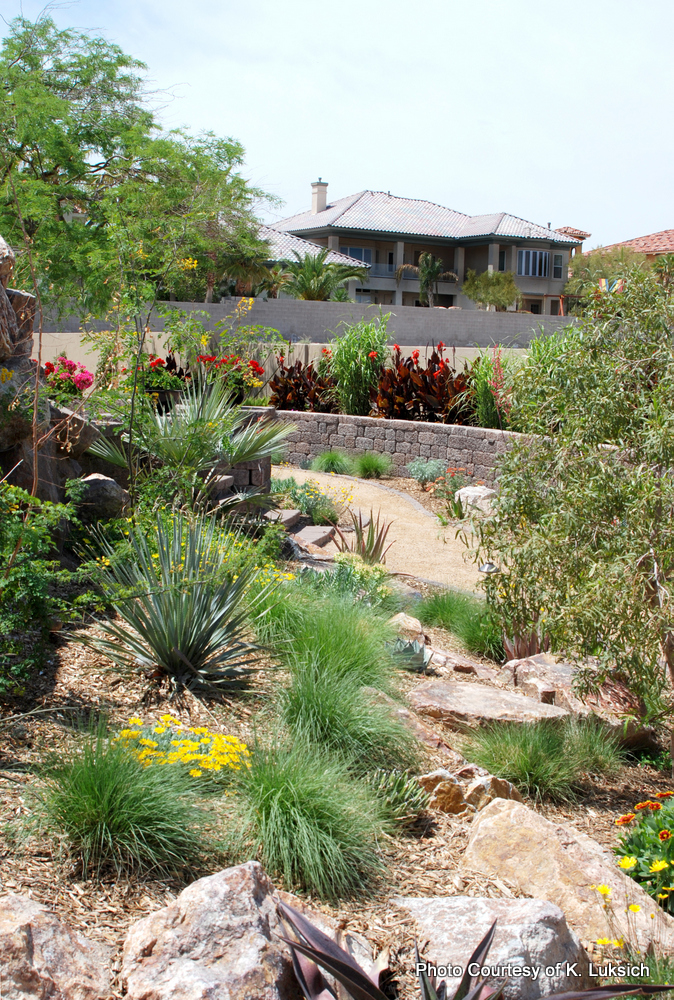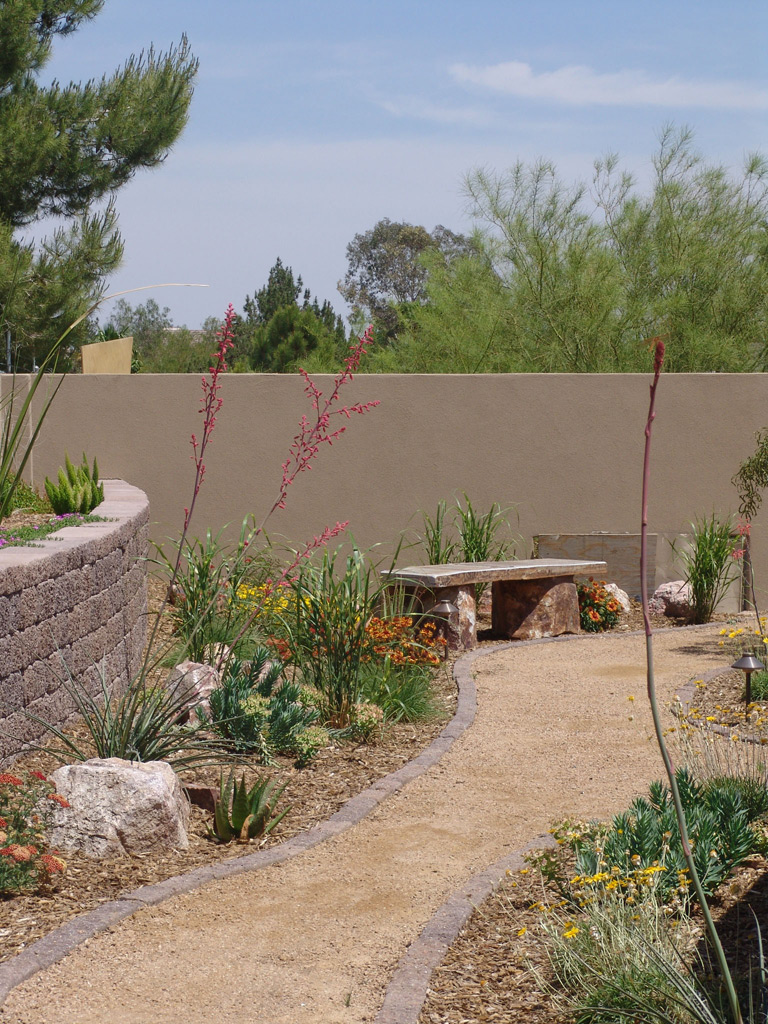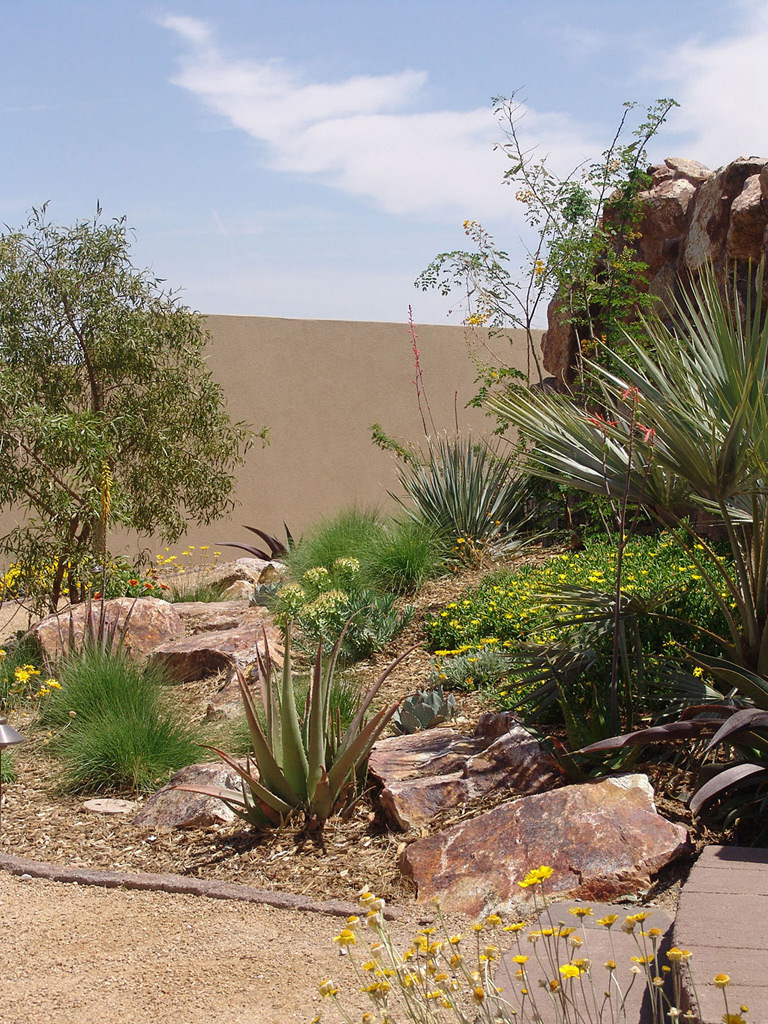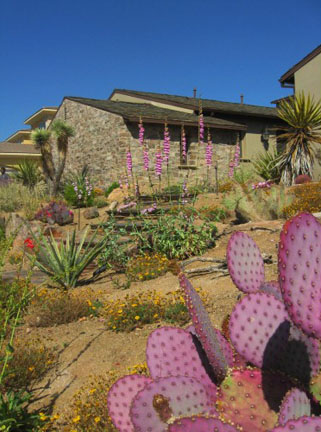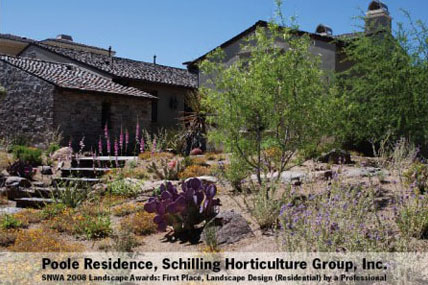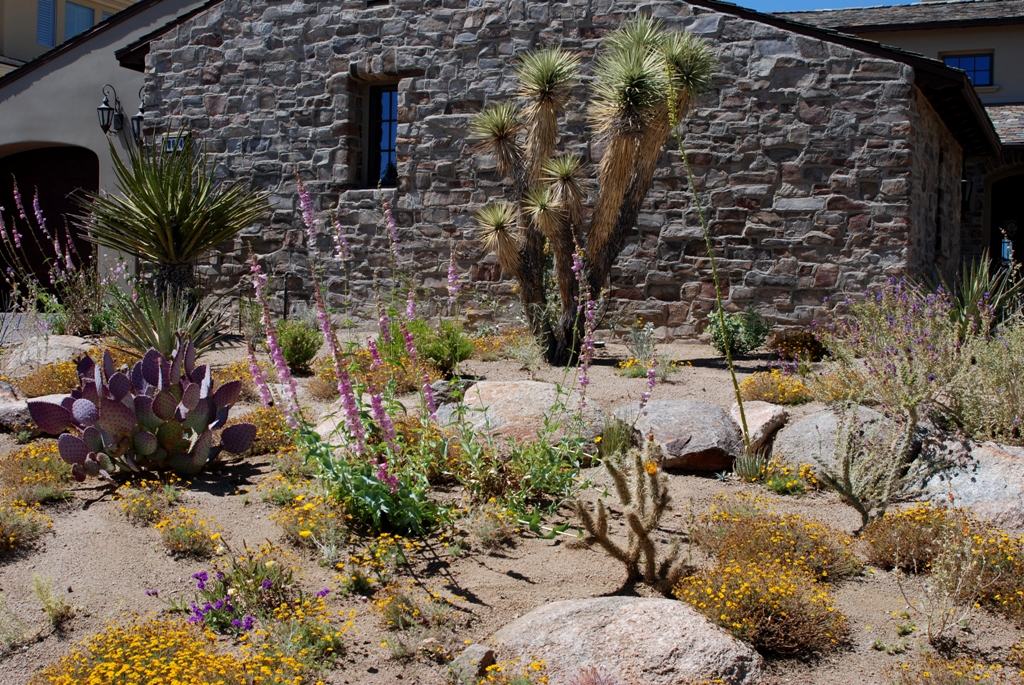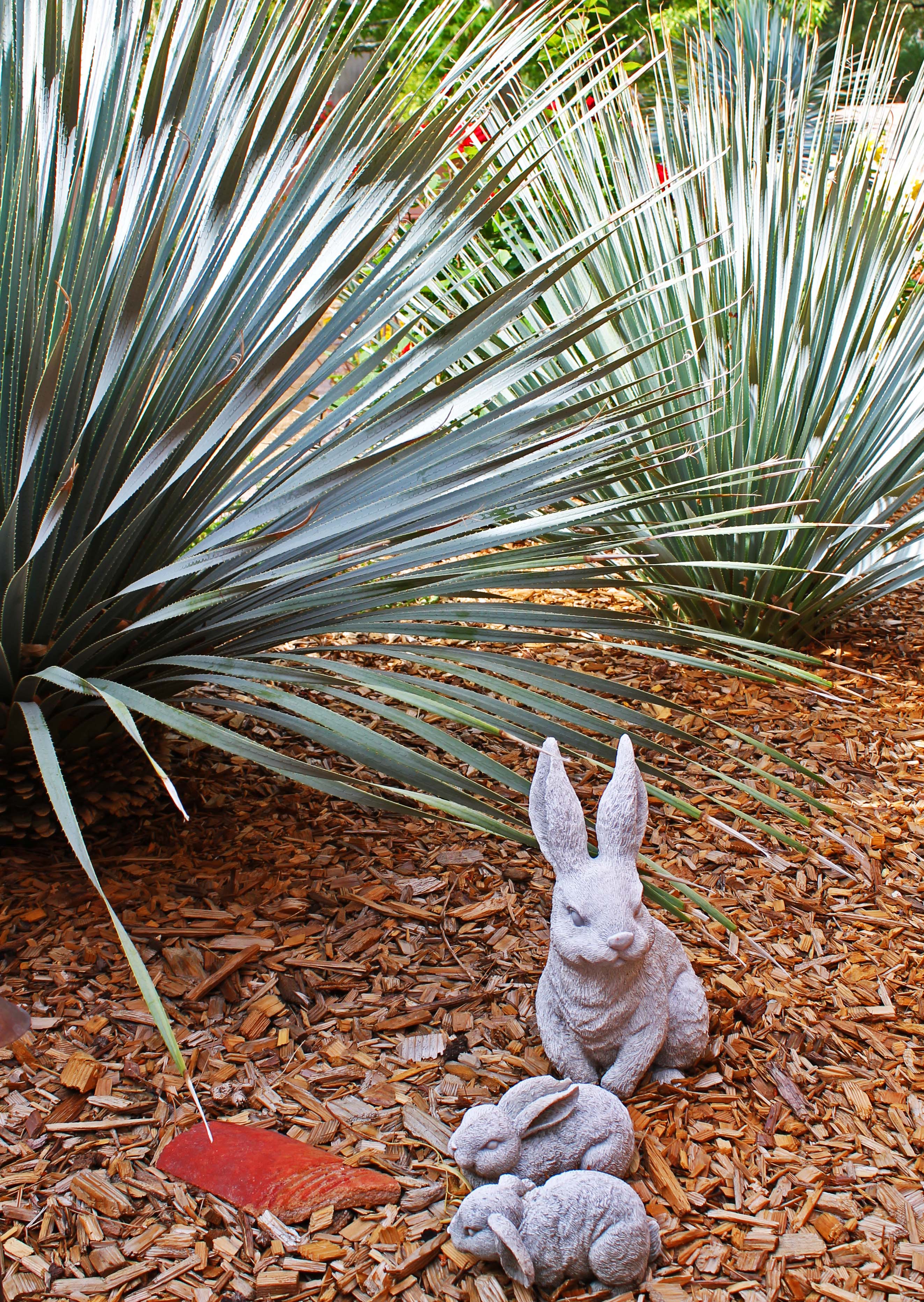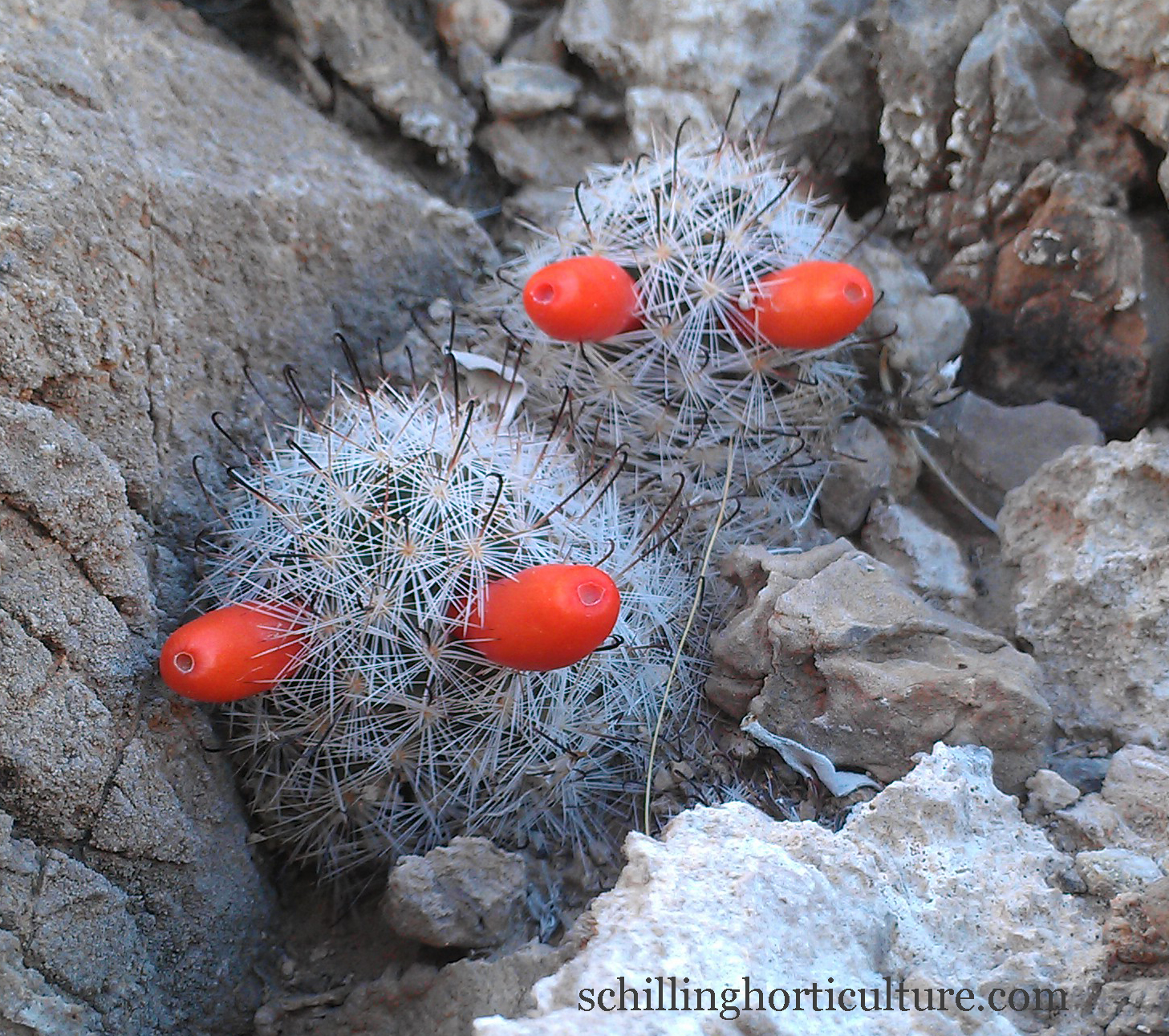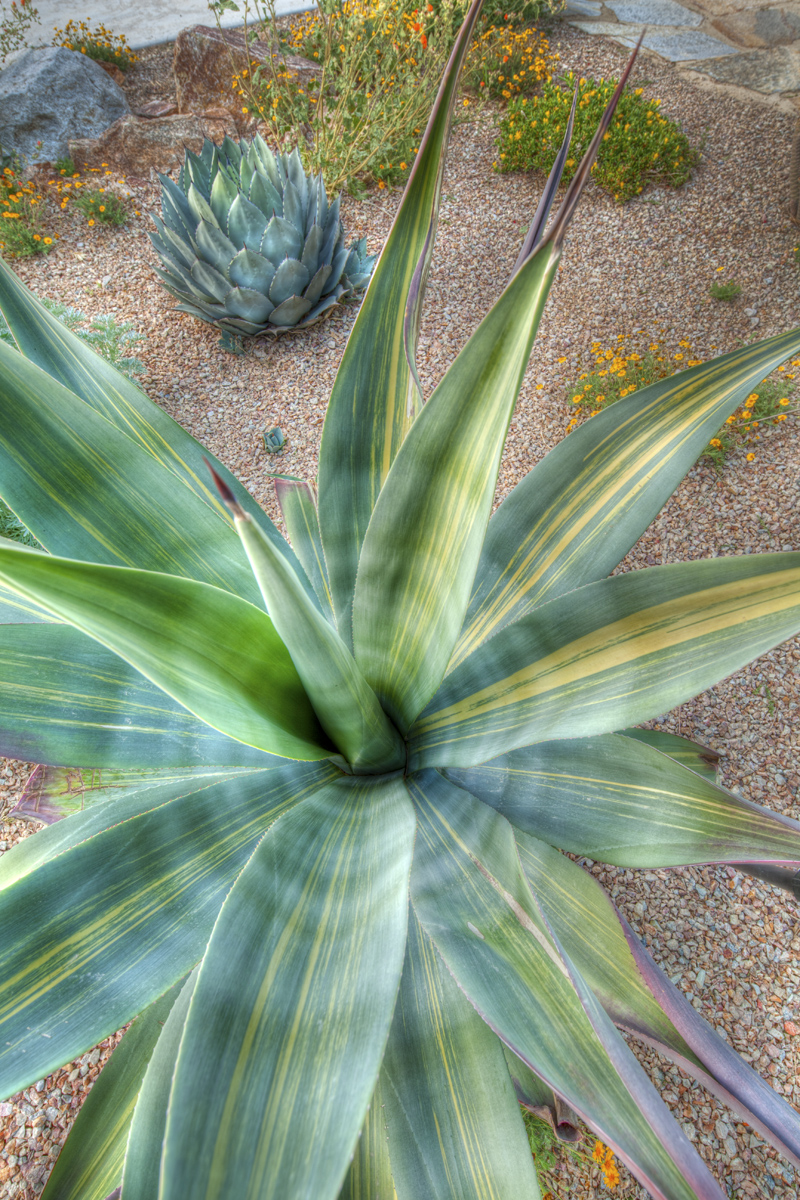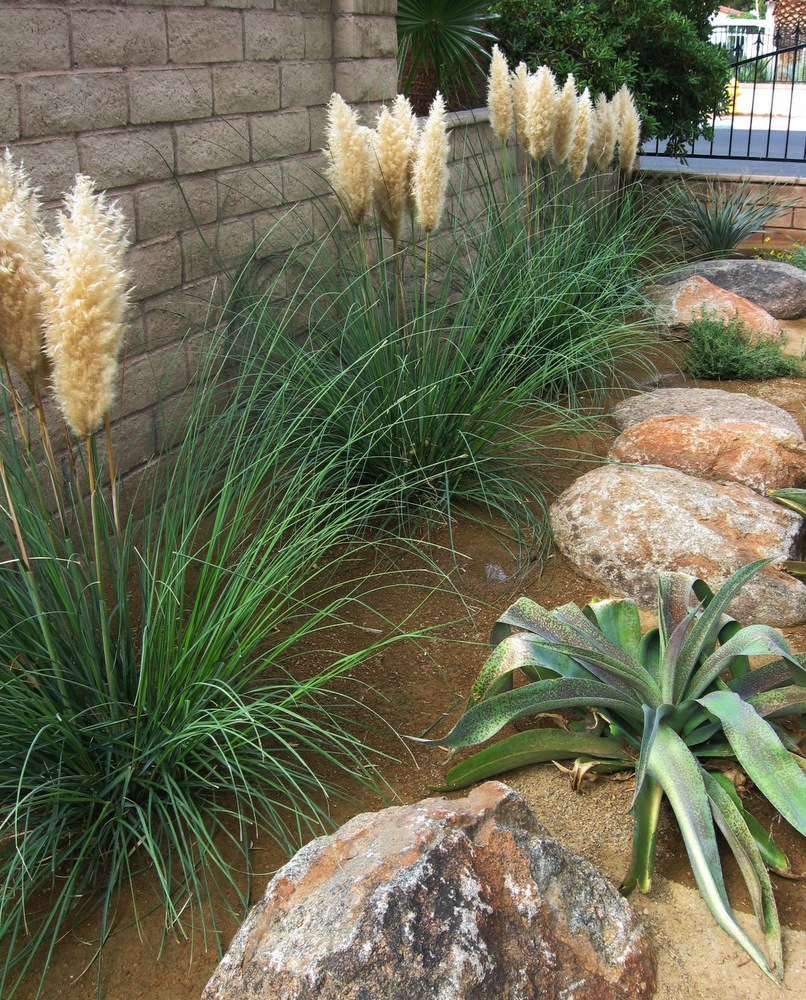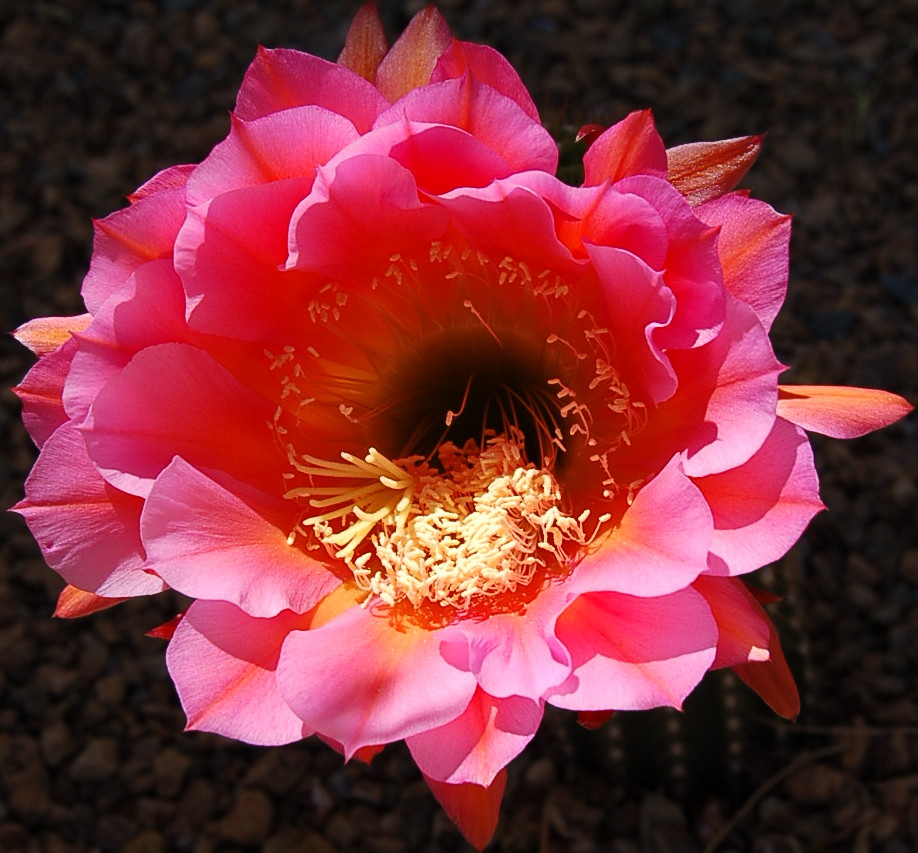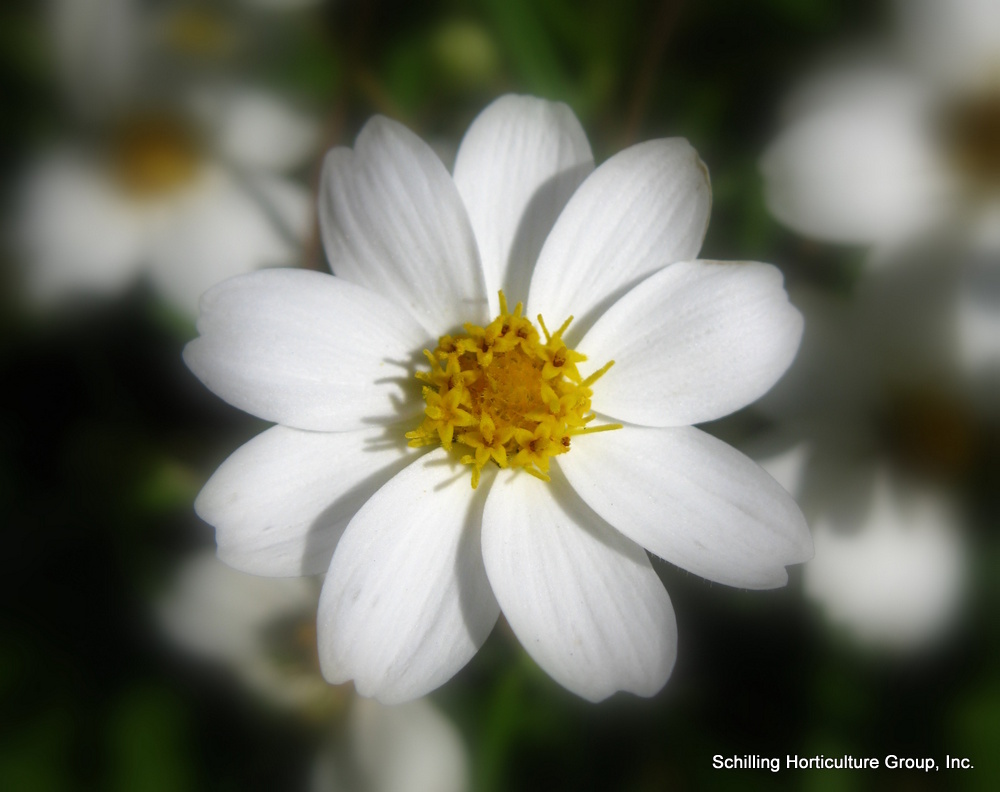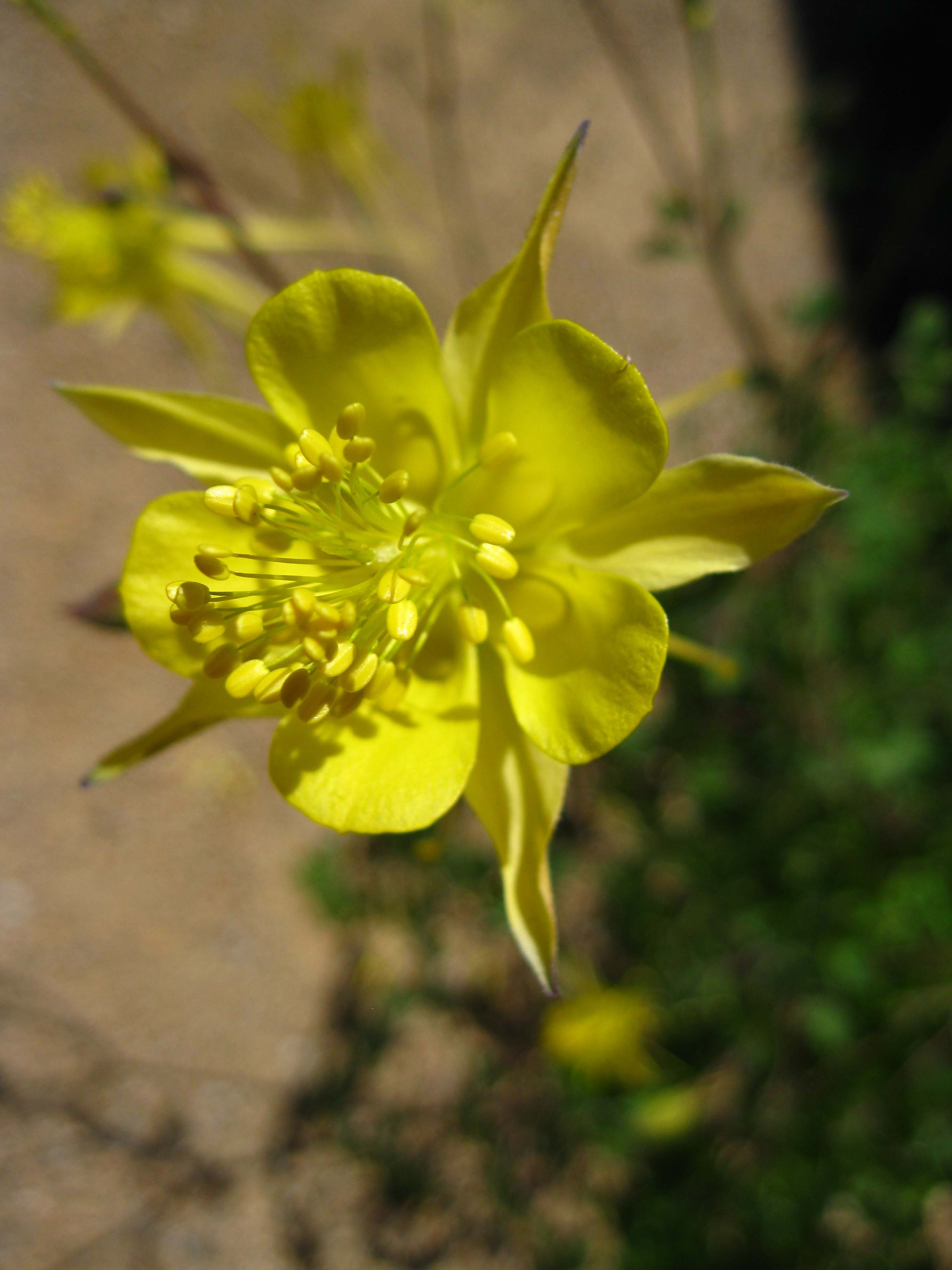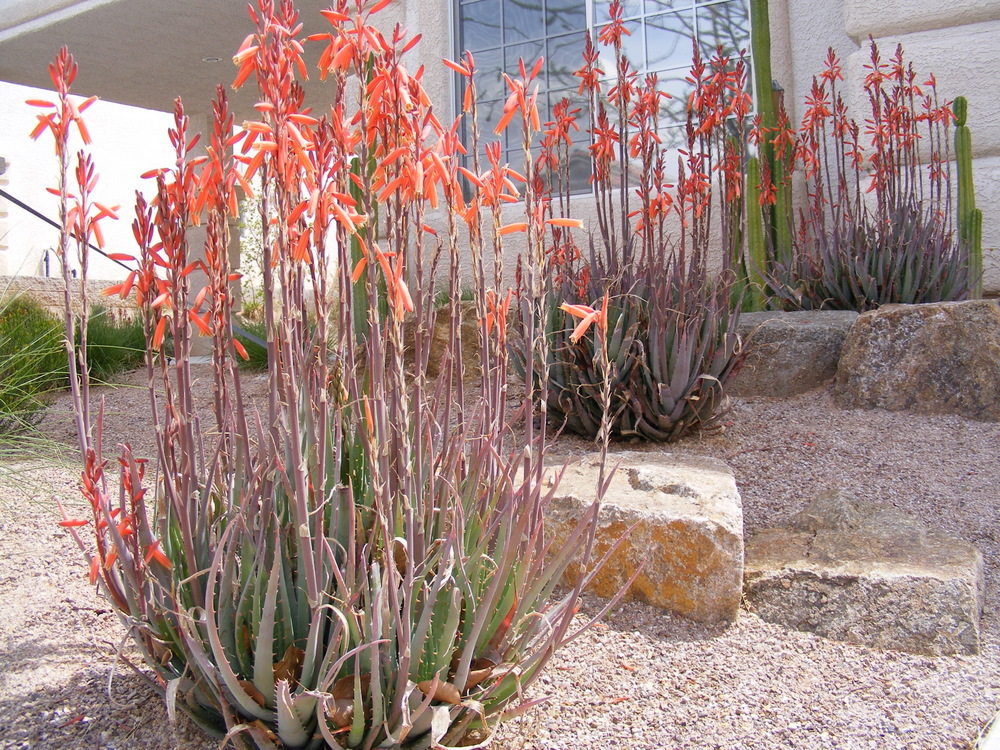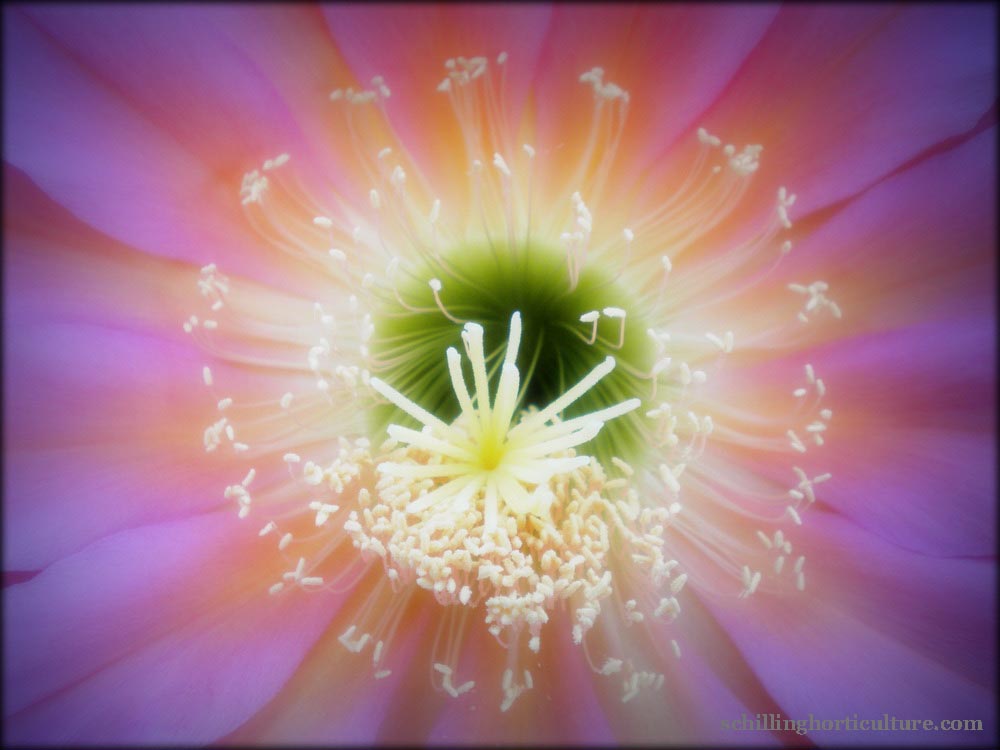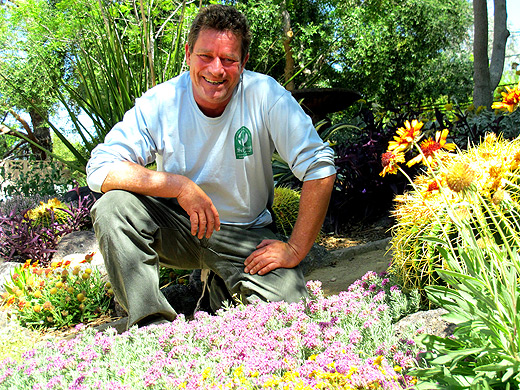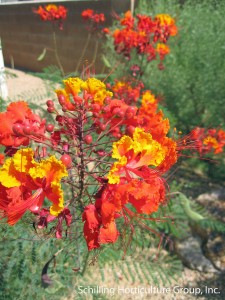
Caesalpinia pulcherrima (Red Bird of Paradise)
It’s wintertime in the desert, and even with our relatively mild climate, not all plants respond well to a cold season planting. So, what not to plant this time of year? The first plant that comes to my mind is the summer-time favorite, Red Bird of Paradise (Caesalpinia pulcherrima).
Native to the West Indies, Central and South America, the Red Bird of Paradise is a well-adapted for our hot climate and poor soils. This tropical-looking plant produces large, colorful clusters of orange-red flowers from summer until the first frost, and boasts lush, green, fern-like foliage. Red Bird of Paradise adds superb showy color and a tropical flare to the garden.
It has been my experience that Red Bird of Paradise only takes off well if planted in warm
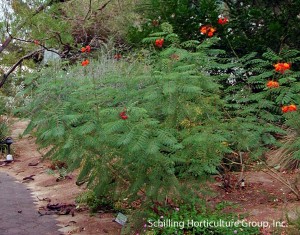
Caesalpinia pulcherrima (Red Bird of Paradise)
weather, so we limit planting them from May through September. If requested by a customer, we inform them of what we know in regards to time of year of planting and let them decide, but really advocate only planting them when nighttime temperatures are above 60°F. Red Bird of Paradise does go dormant in the wintertime, but makes a colorful comeback in late spring. The amazing flower show makes it well worth tolerating its cold weather downtime.
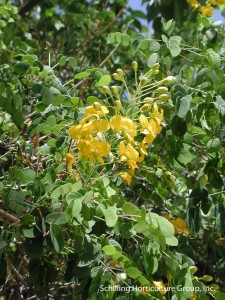
Caesalpinia mexicana (Mexican Bird of Paradise)
Unlike the Red Bird of Paradise, its cousin the Mexican Bird of Paradise (Caesalpinia mexicana) has a longer planting season, ranging from early spring to mid-fall. Because it does have the potential for cold damage, and younger plants die in cold more readily than more established specimens, I do not recommend planting the Mexican Bird of Paradise from October to mid-February. C. Mexicana does well in the Vegas valley, and only freezes back in the coldest of years. It will remain evergreen in warmer part of the valley, but will shed foliage when frost occurs. If it does not receive cold damage, it can grow into a small tree of about 8-10′ in height and spread.
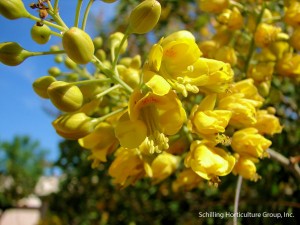
Caesalpinia mexicana (Mexican Bird of Paradise)
Mexican Bird of Paradise is especially striking in the warmer months when its dark green, fern-like foliage provides a backdrop for the bright yellow flower spikes erupting from the tips of its woody branches. Speaking of erupting, the Mexican Bird of Paradise has a very interesting way of spreading seed! After flowering, the plant forms pea-like seed pods. As the pods mature and dry, the two sides begin to twist, but in directions opposite one another; each side holds the other in check. The tension increases over time until it reaches a point where it can’t hold it anymore, and then, pop! –the pod pops open with a loud snapping sound and scatters the seeds a great distance, often 20 feet or more. Though C. mexicana does look similar to C. pulcherrima, it can be differentiated by flower color and by the size of the individual leaflets of C. mexicana being much larger than those of C. pulcherrima.
Though in the same genus (Caesalpinia) as the Mexican and Red Birds of Paradise, the Yellow Bird of Paradise (Caesalpinia gilliesii) seems to be much more challenged here, especially long-term. The flowers are particularly showy, with a combination of yellow petals and red stamens. If requested by a client, I inform them that it tends to get borers, and suffers from discoloration and die-back of stem tissue, as well as sporadic die-back of random portions of the plant. Over the years, this plant has seemed quite unreliable to me, and thus – no thank you!
Not the Bird of Paradise plants you were thinking of? The other Bird of Paradise plants that are totally different and unrelated to the Caesalpinia are the Birds of Paradise in the Strelitzia genus. Planted on occasion in the Vegas valley, Tropical Birds of Paradise (S. reginae, and S. nicolai) have large, thick, deep green leaves and a springtime blossom that resembles the head of a bird. Tropical Birds of Paradise need lots of water, prefer rich organic soils, and require protection from cold. As you can probably guess, they usually don’t do well in Southern Nevada, except for the rare moist, protected microclimate. Of the two, I’ve only seen the smaller one, S. reginae, survive in an outdoor planting.
Remember, plant the right plant in the right place – and it sure helps if you’re planting it at the right time of year. Happy digging to you!
Related Images:



